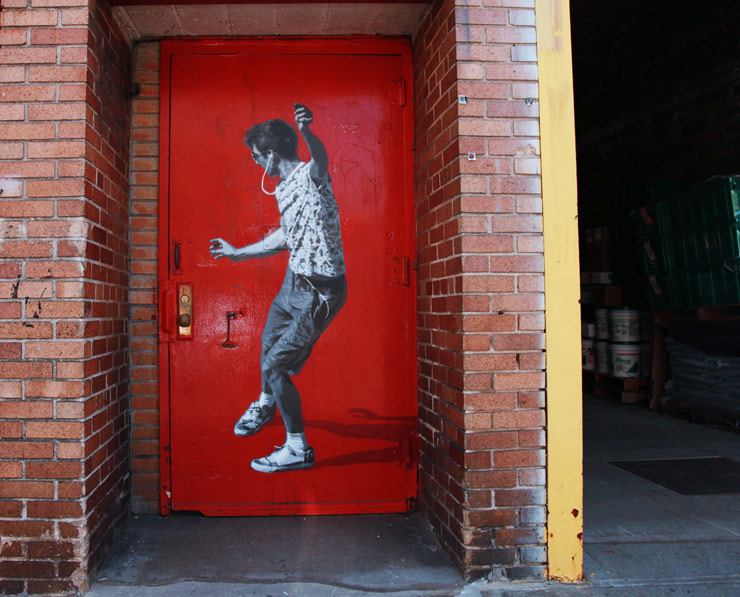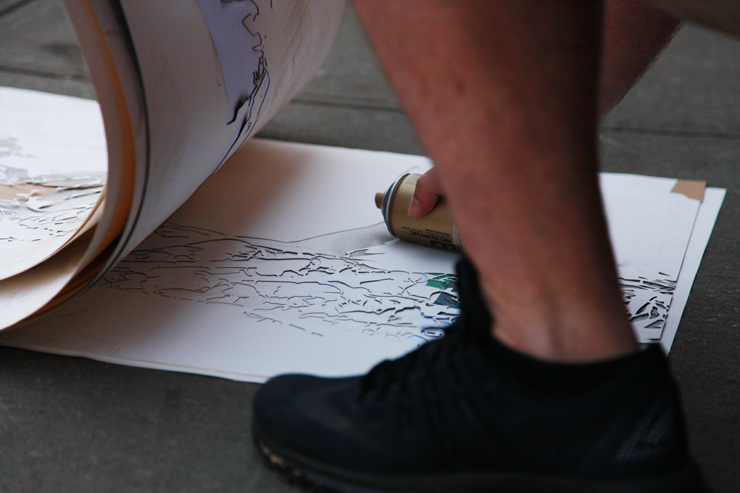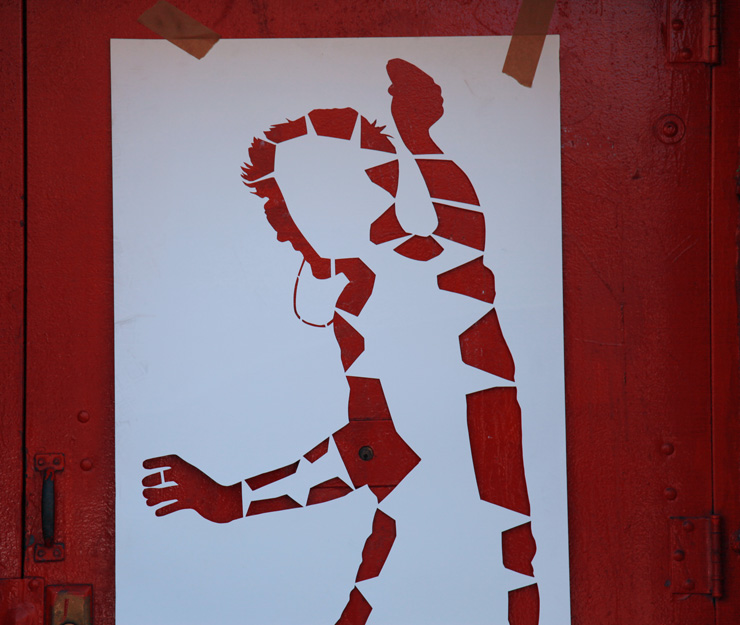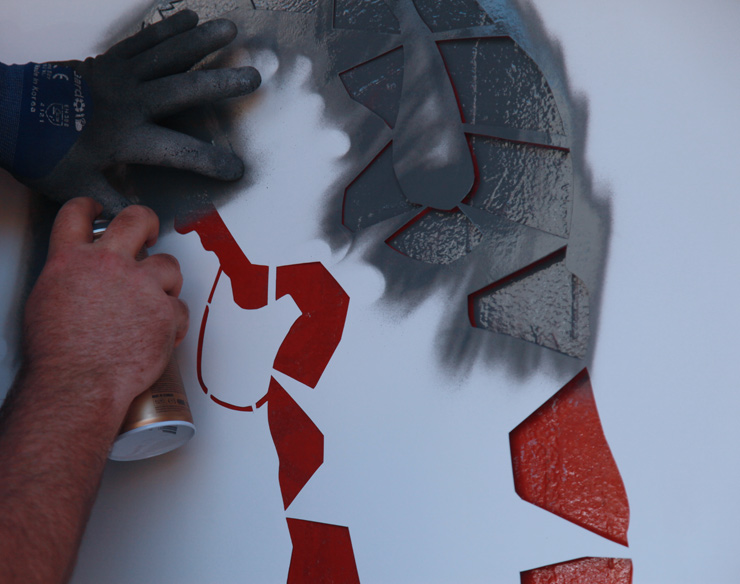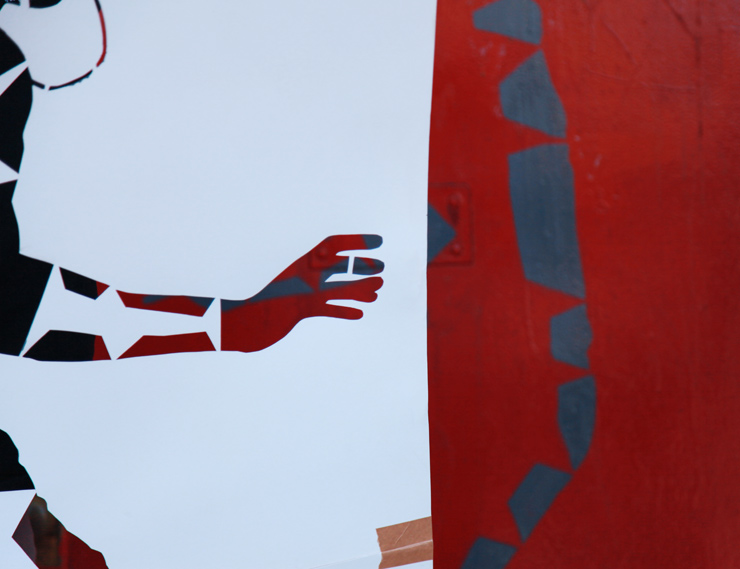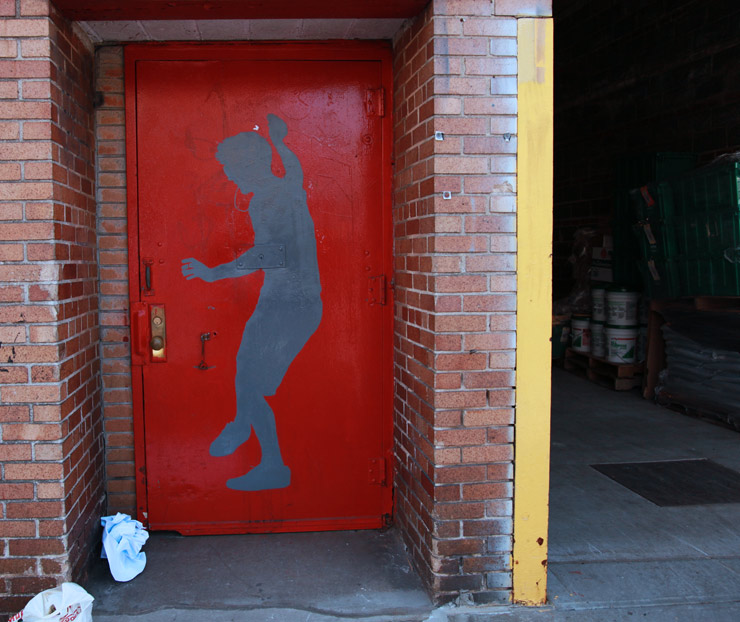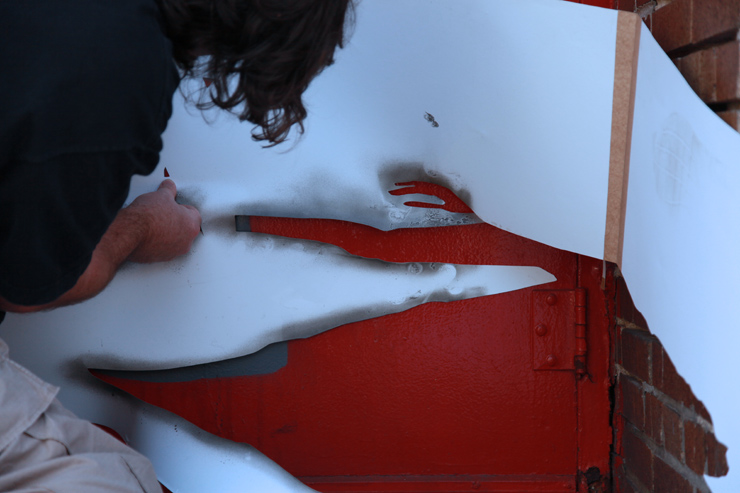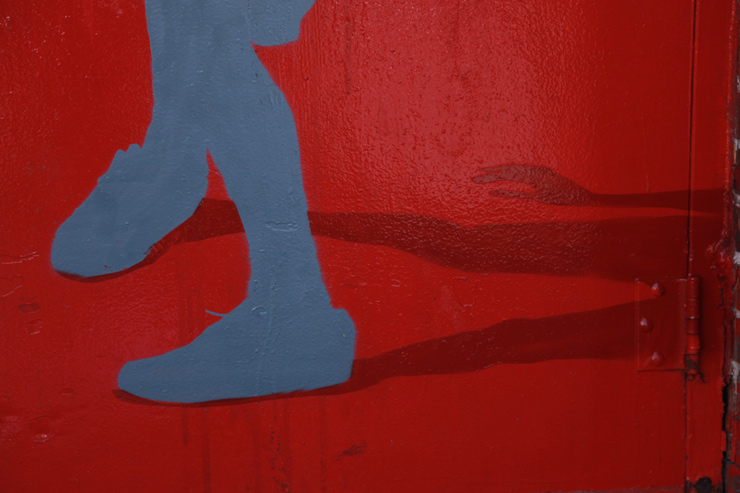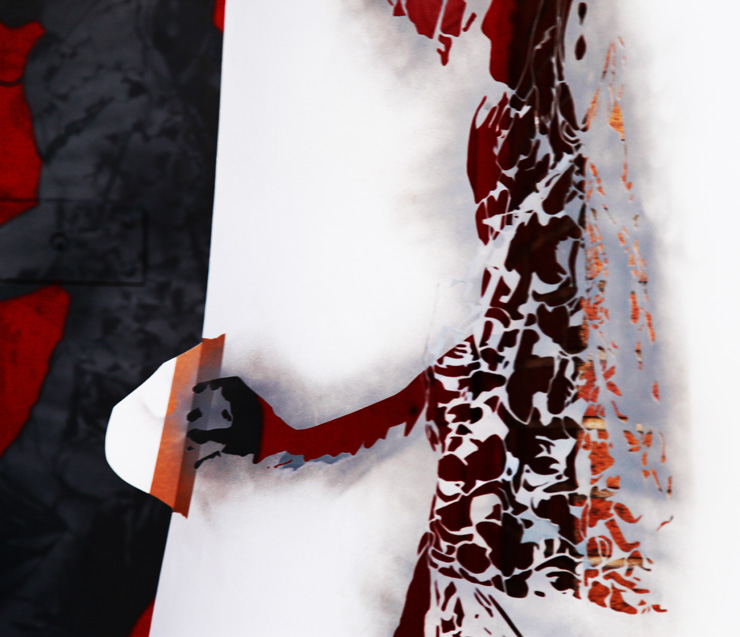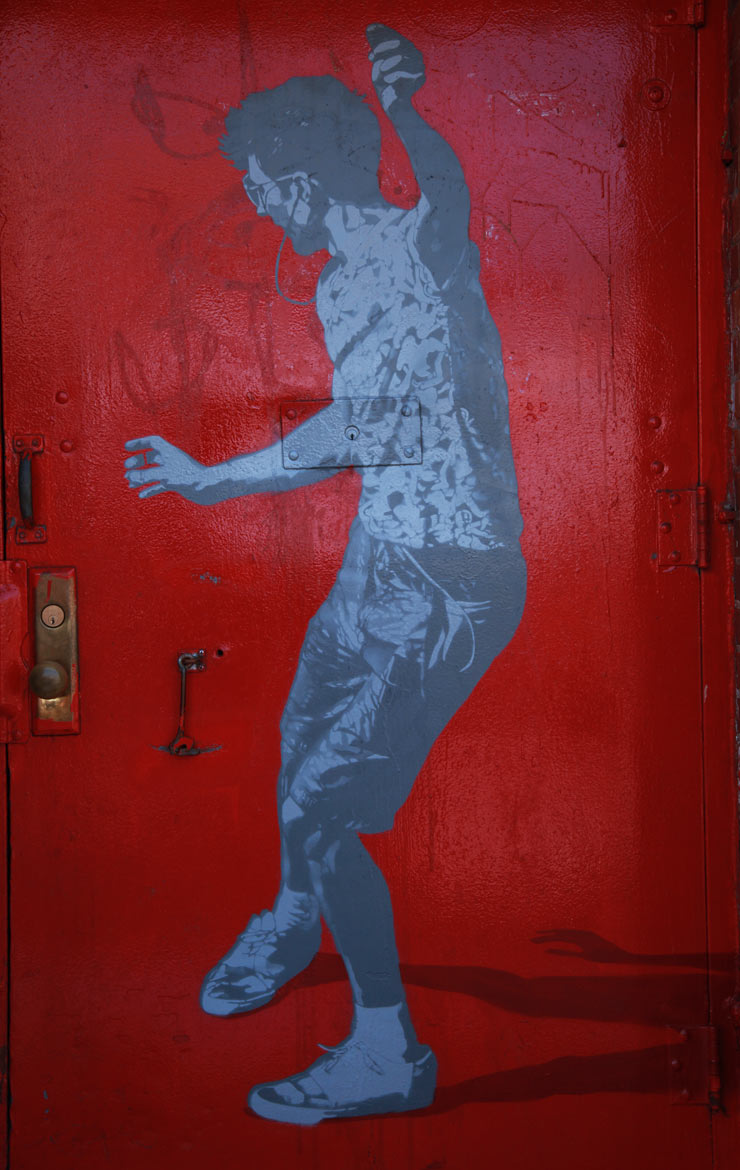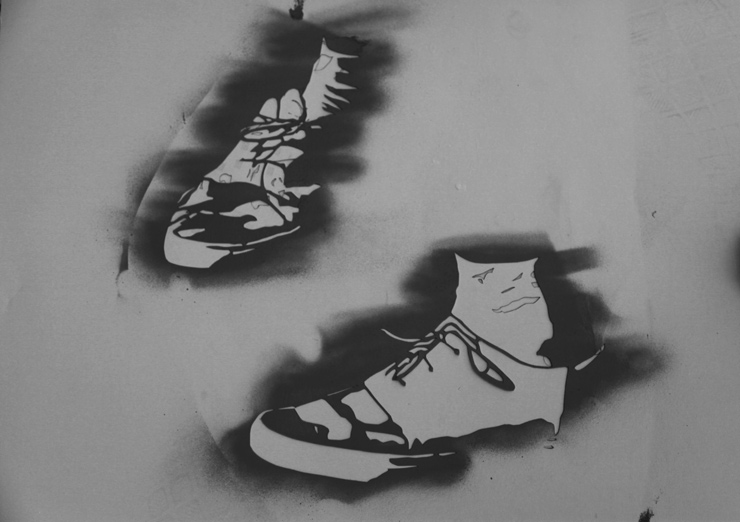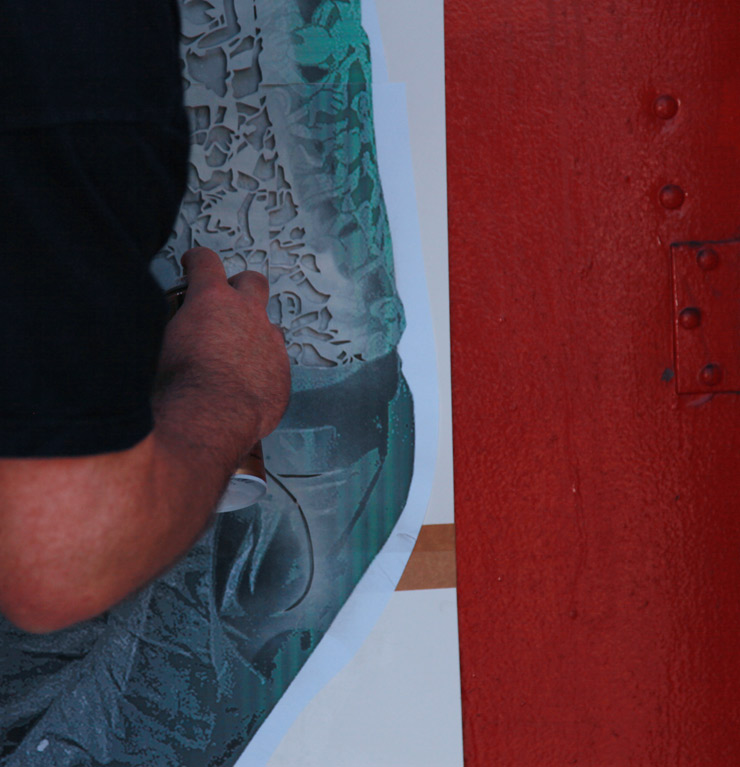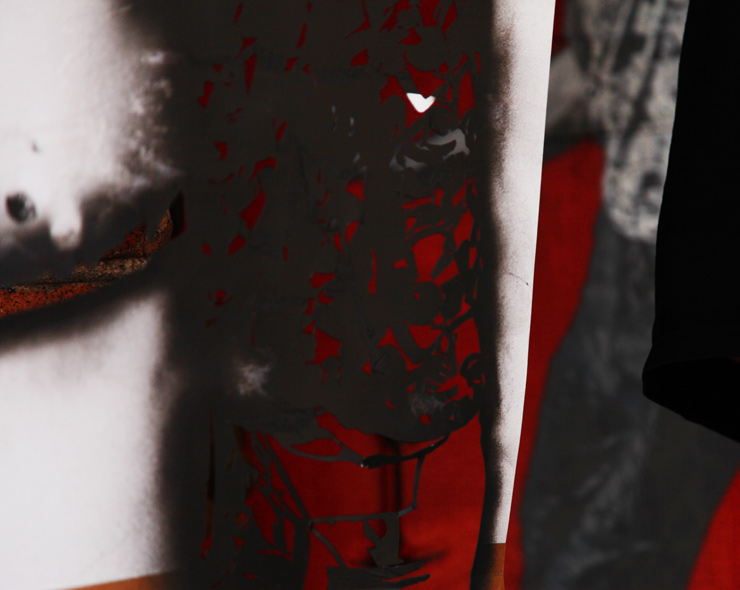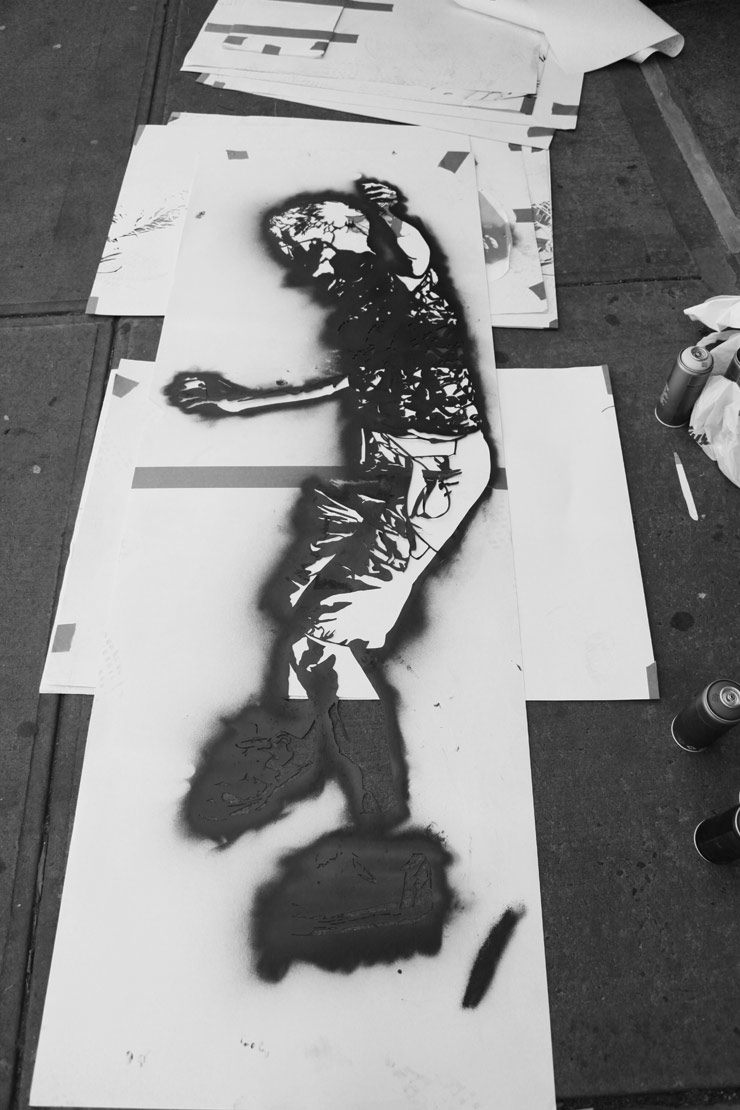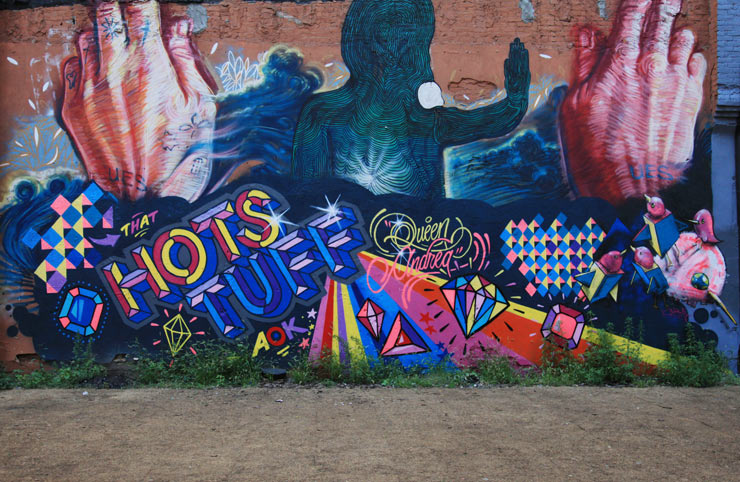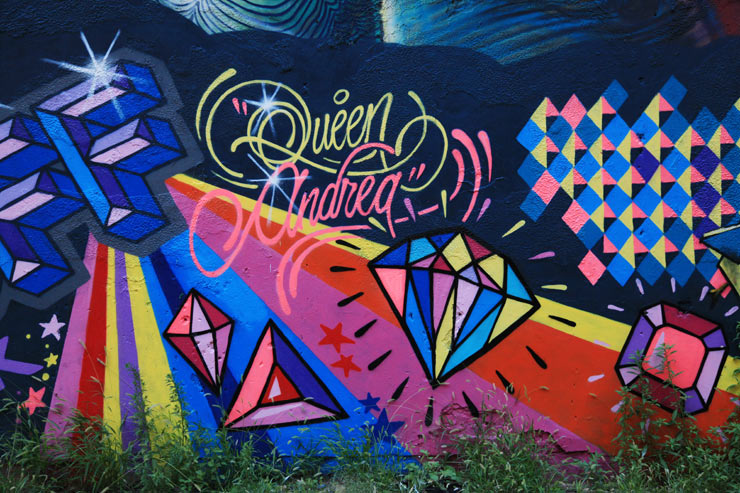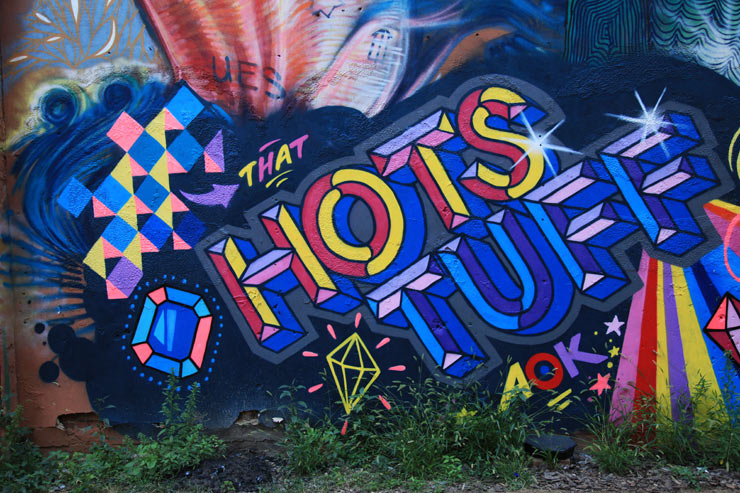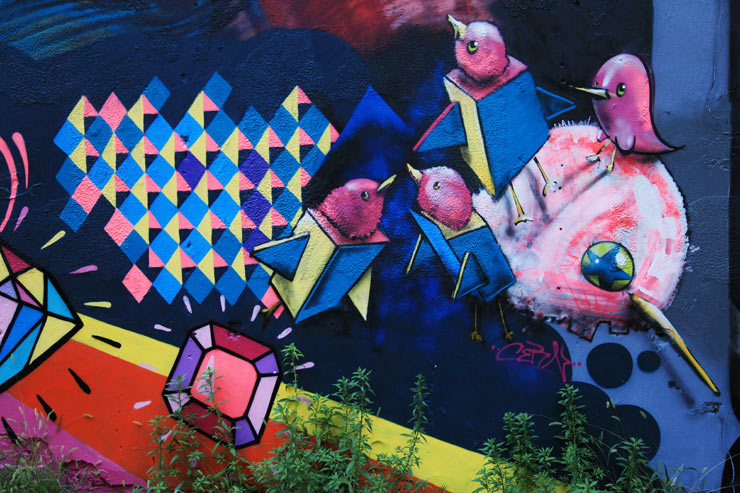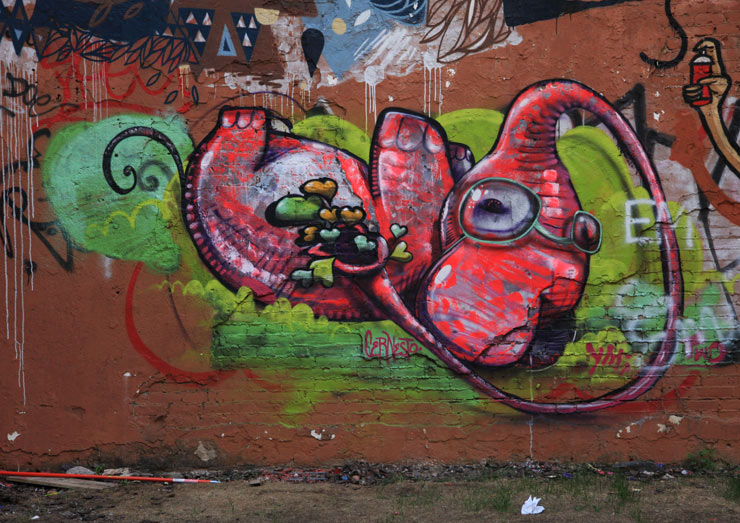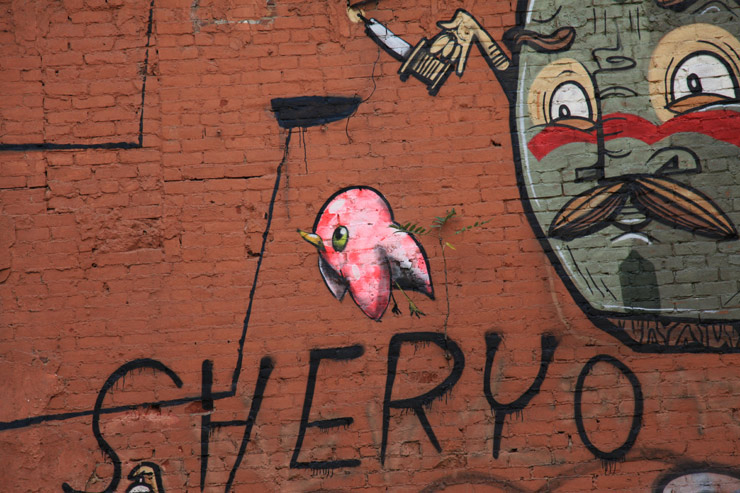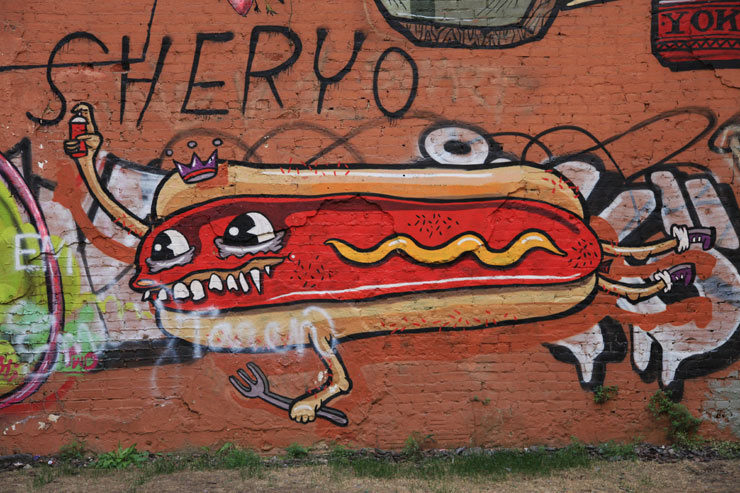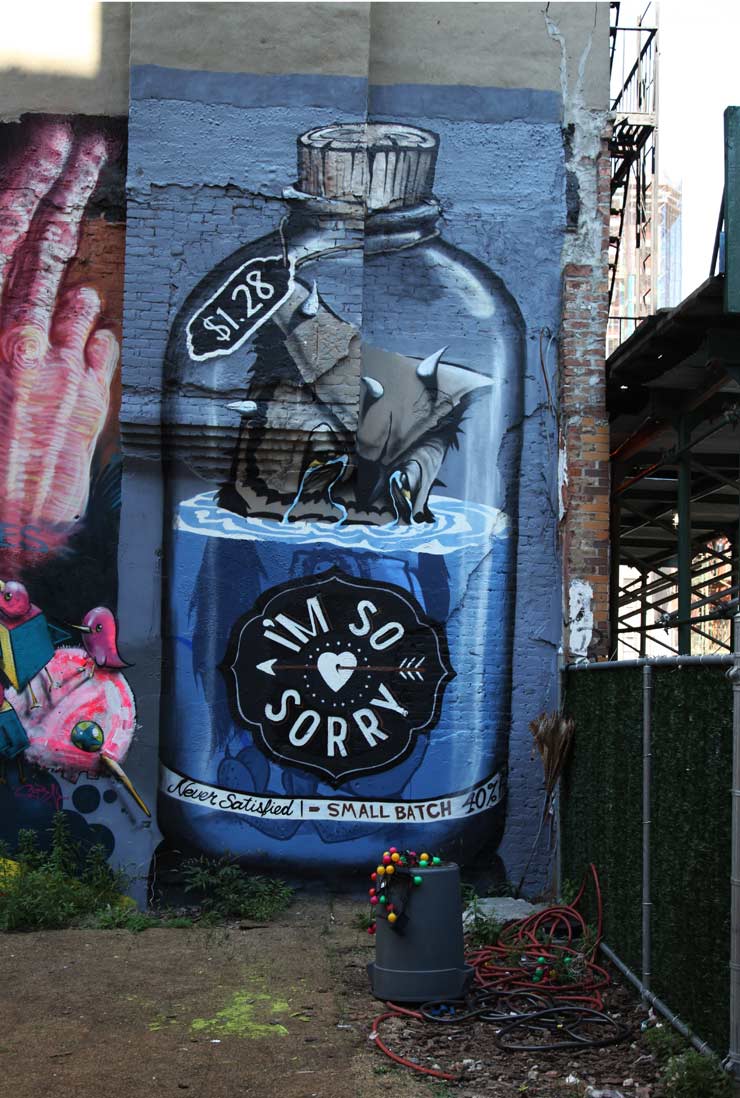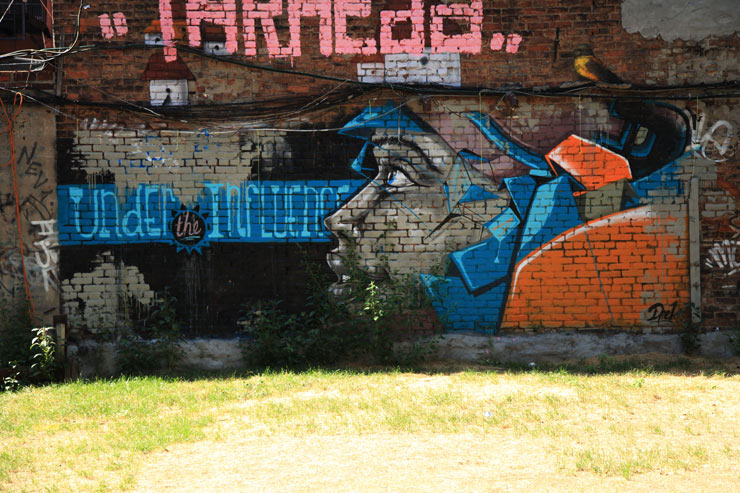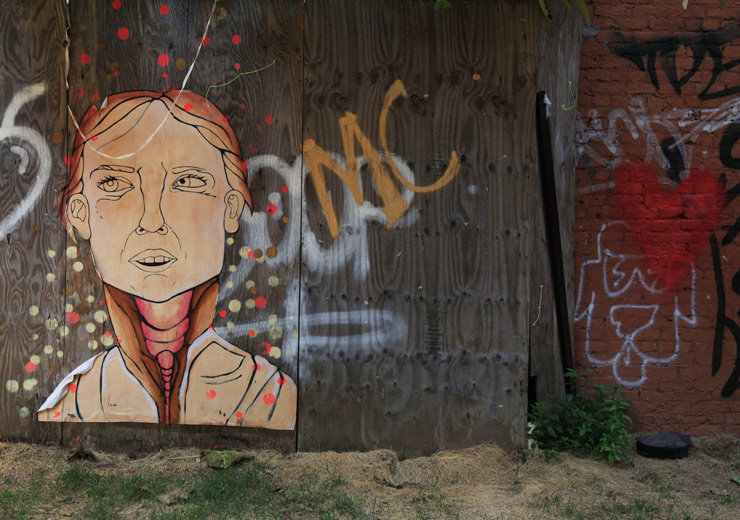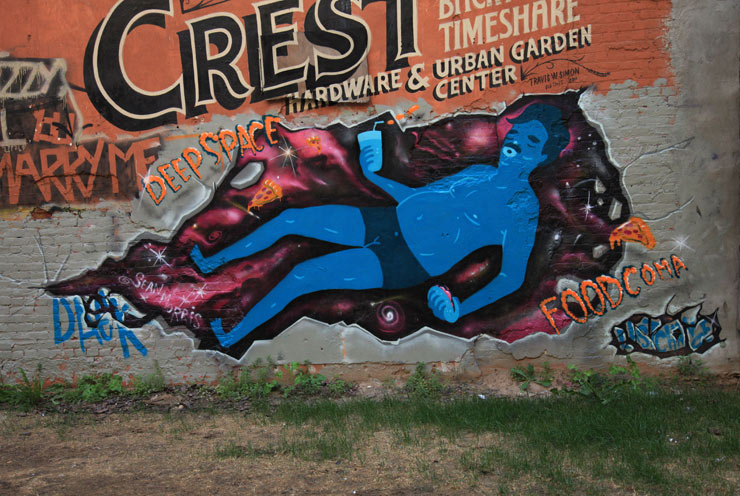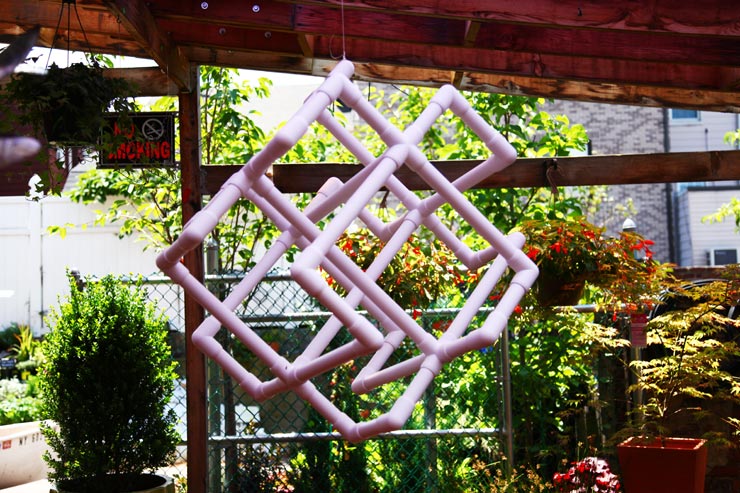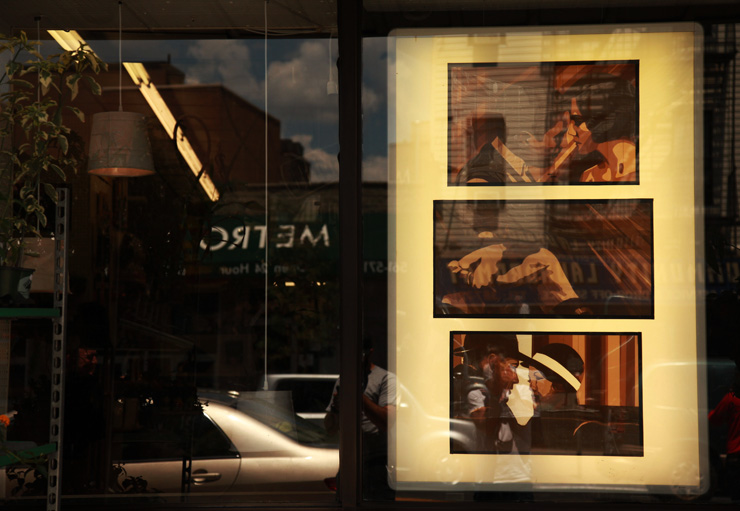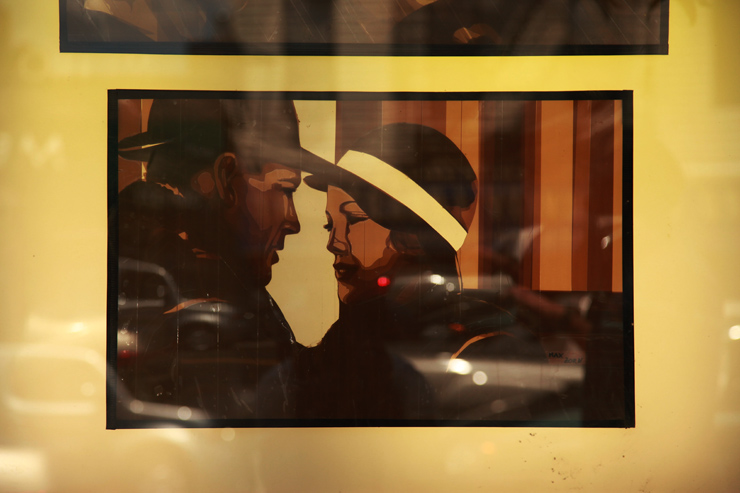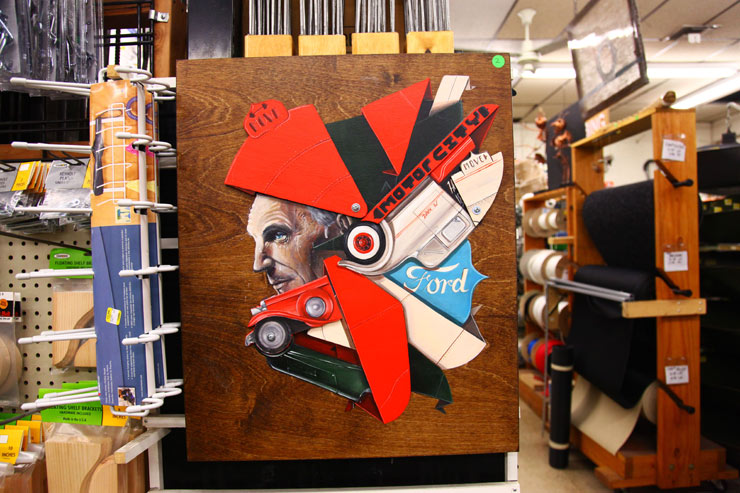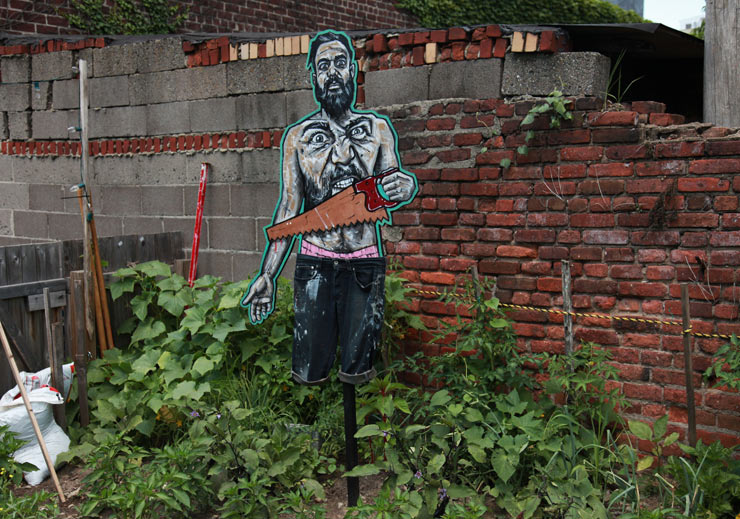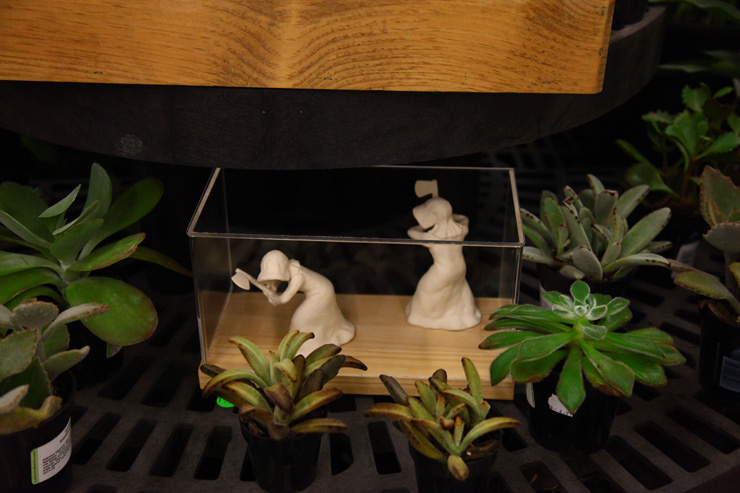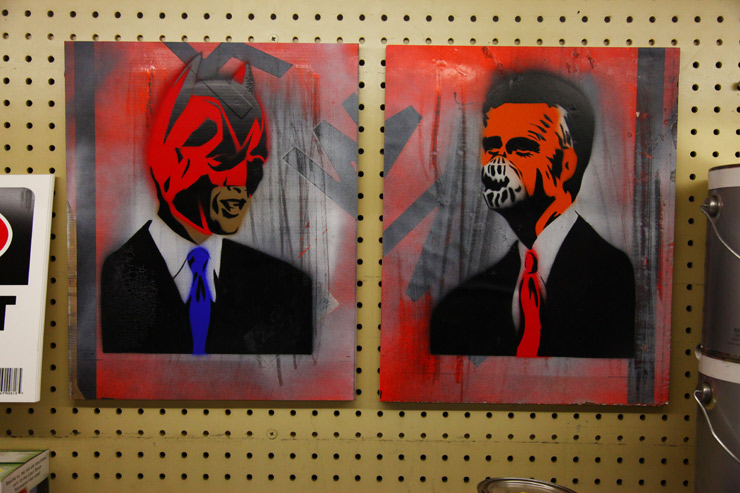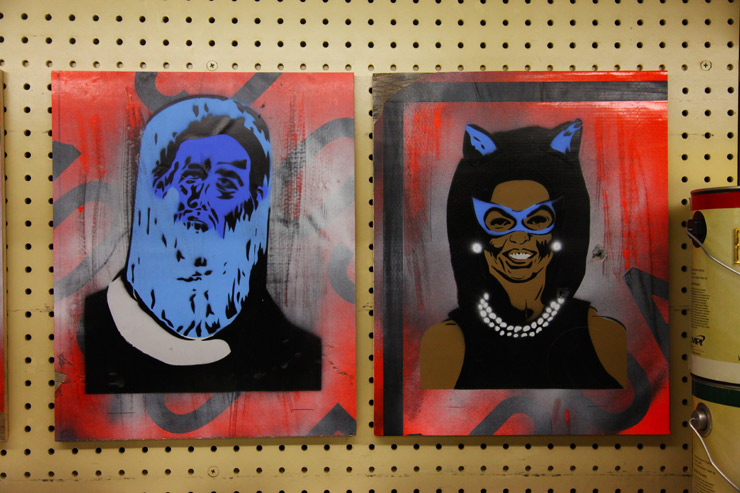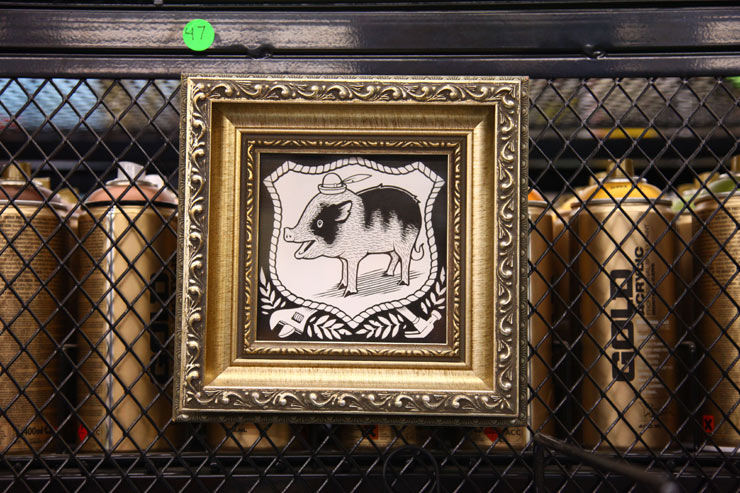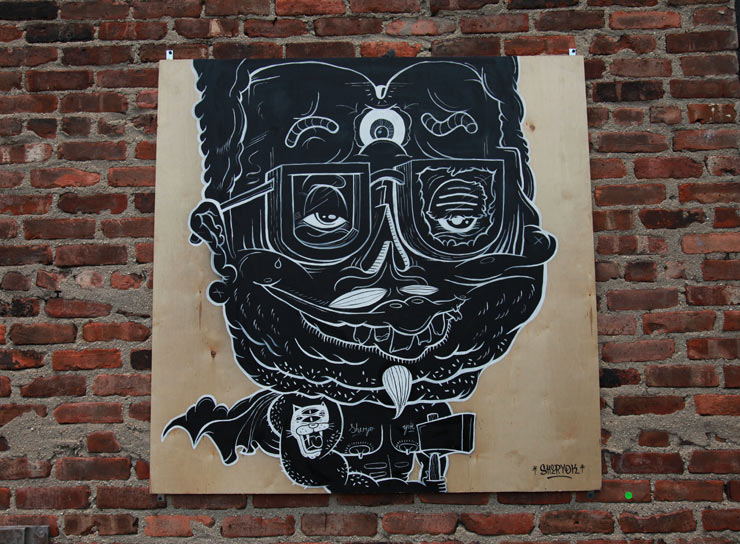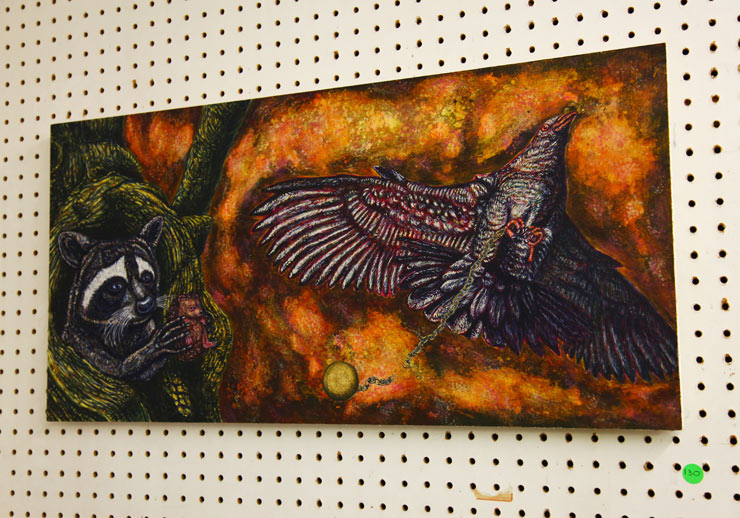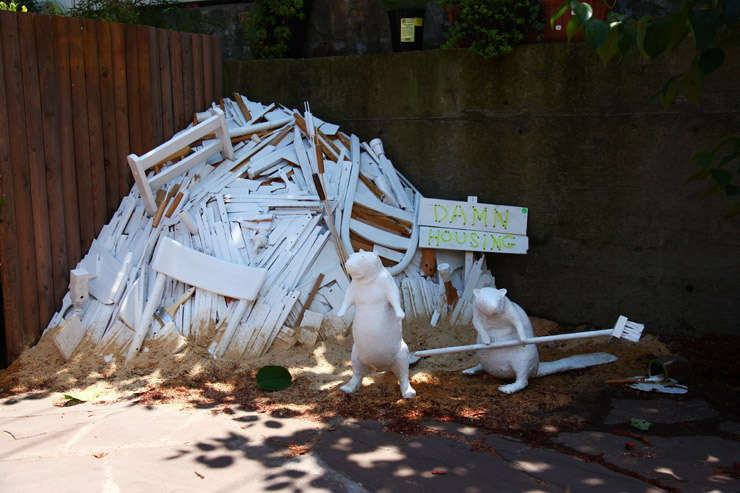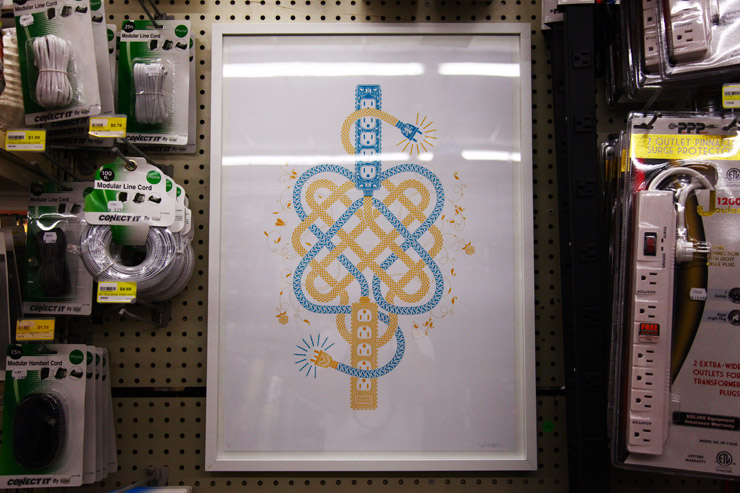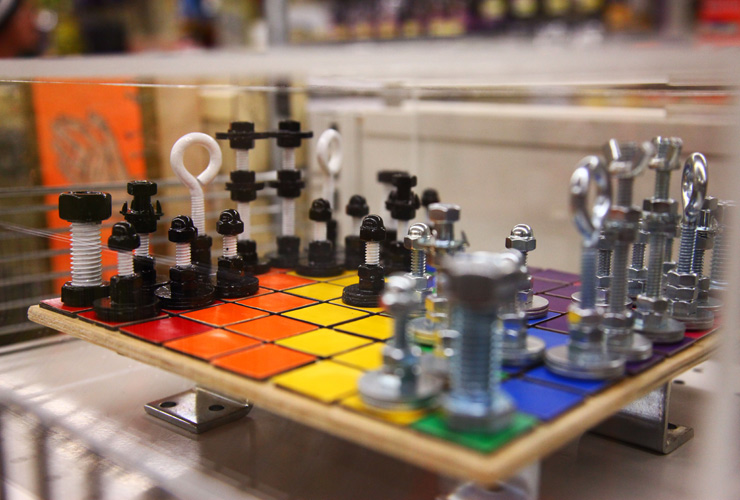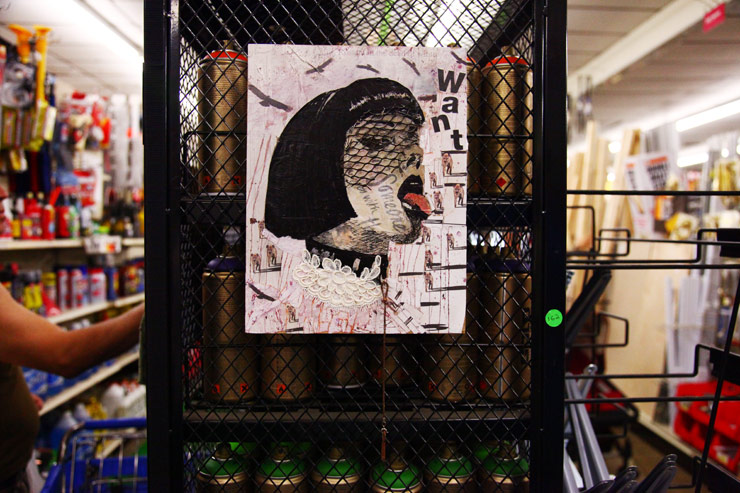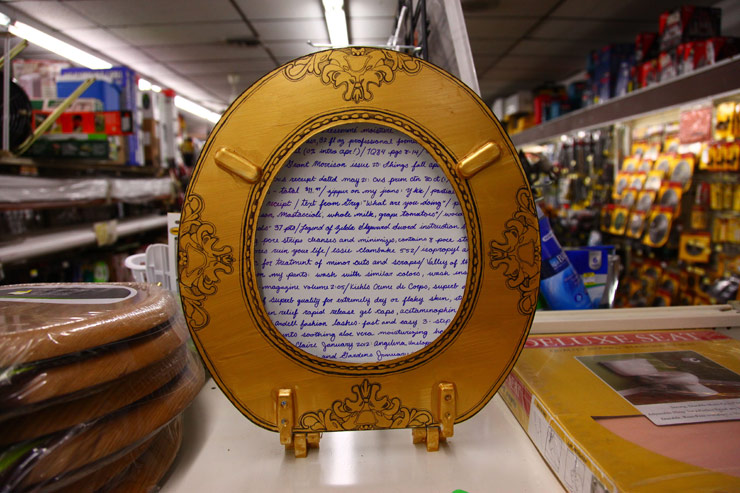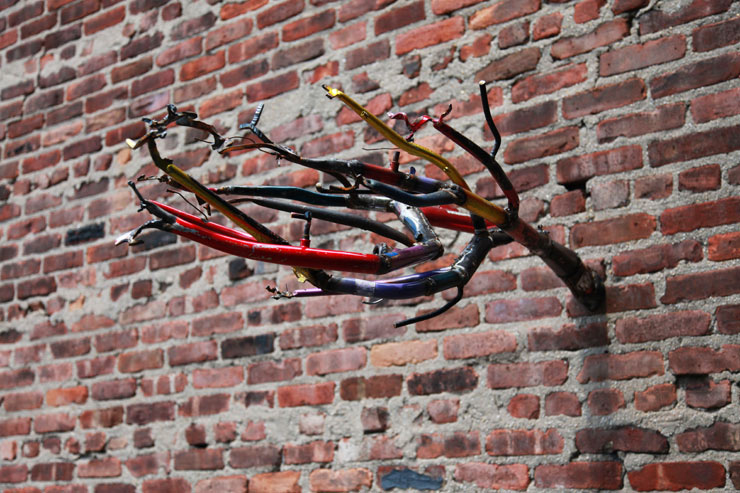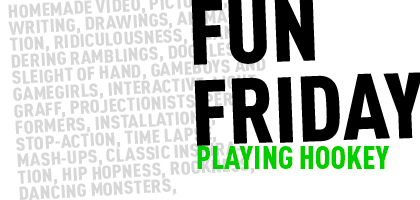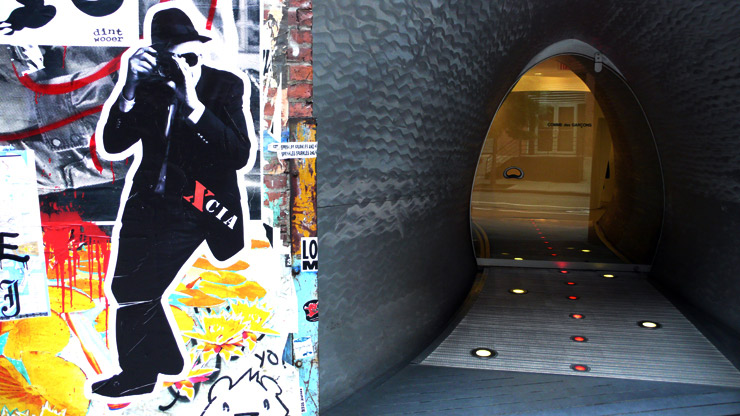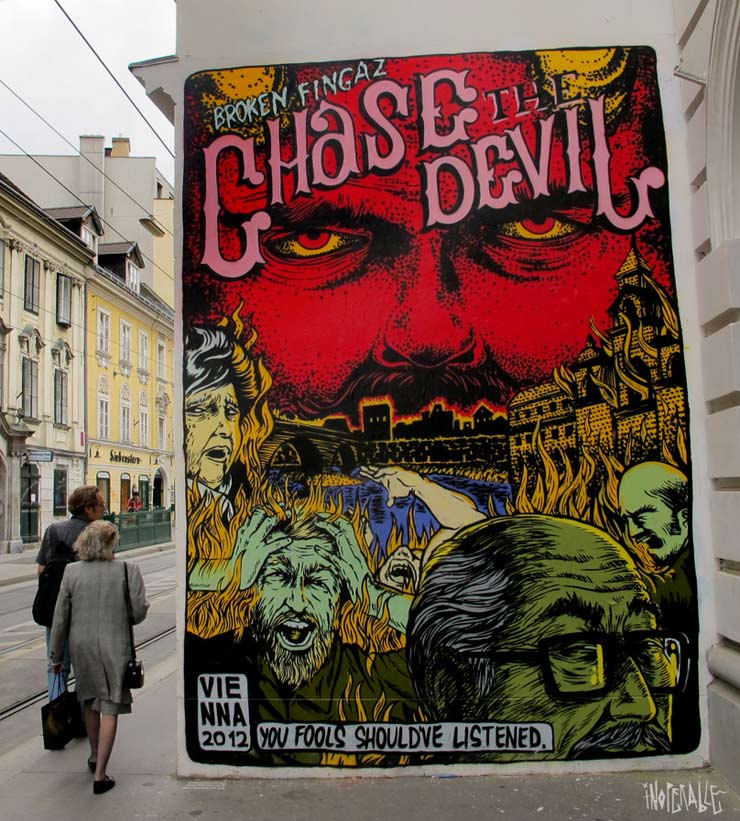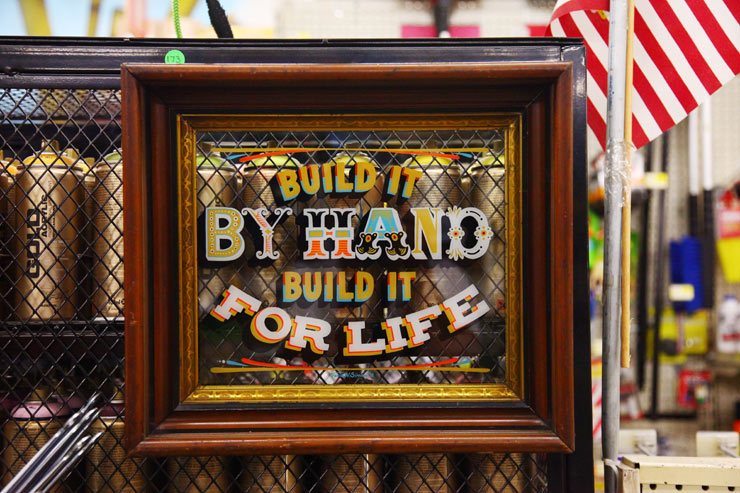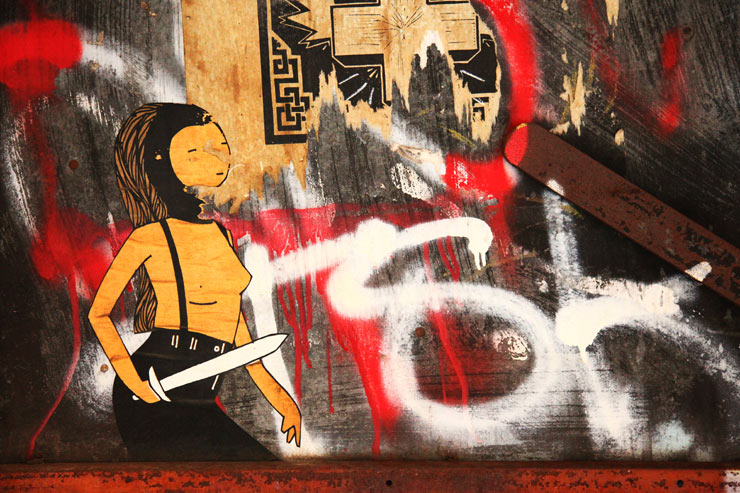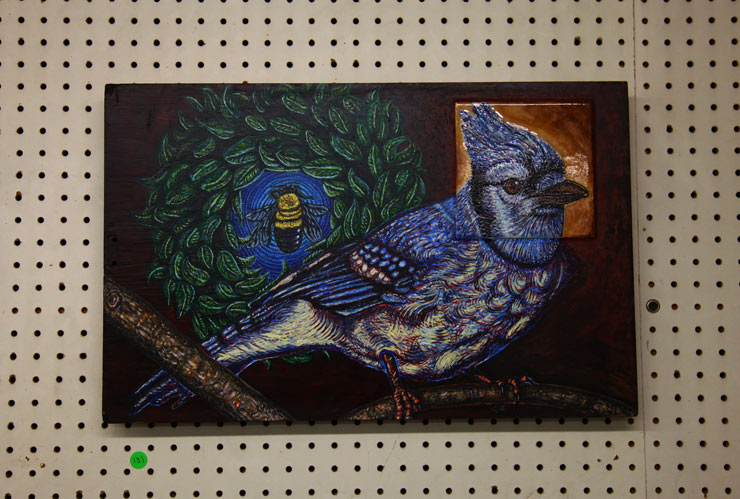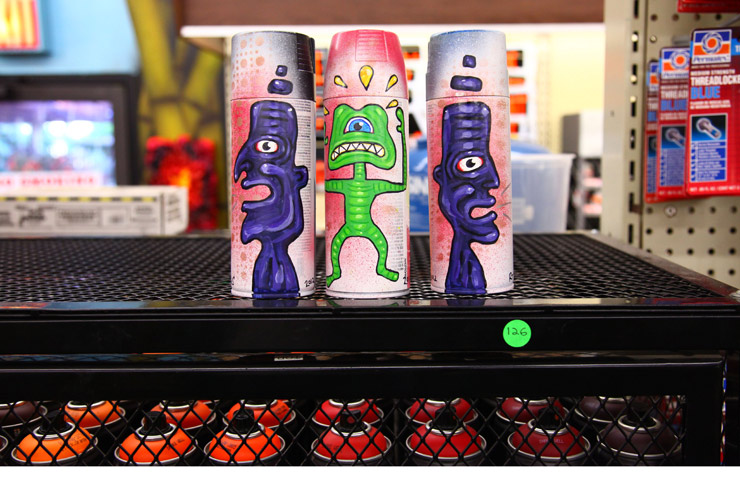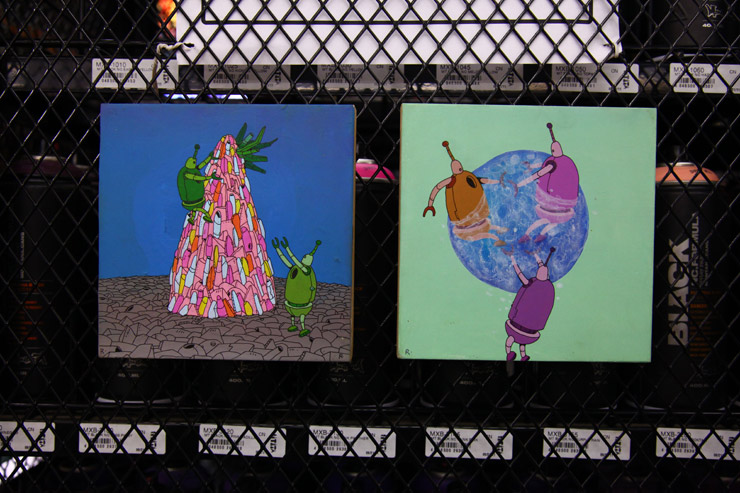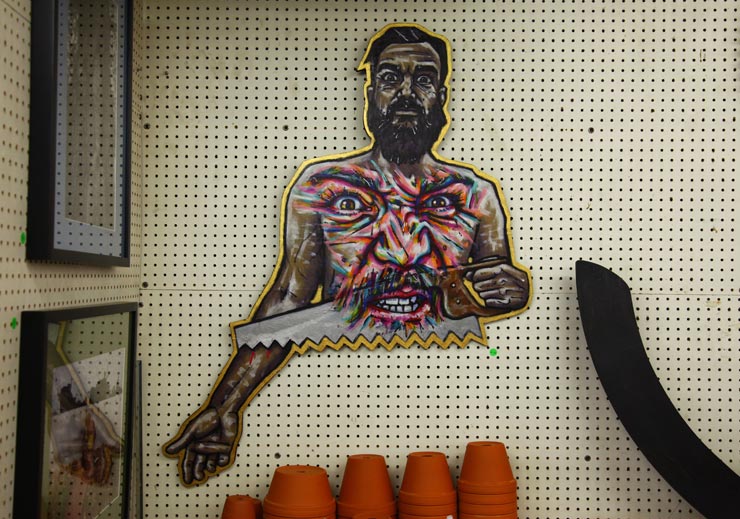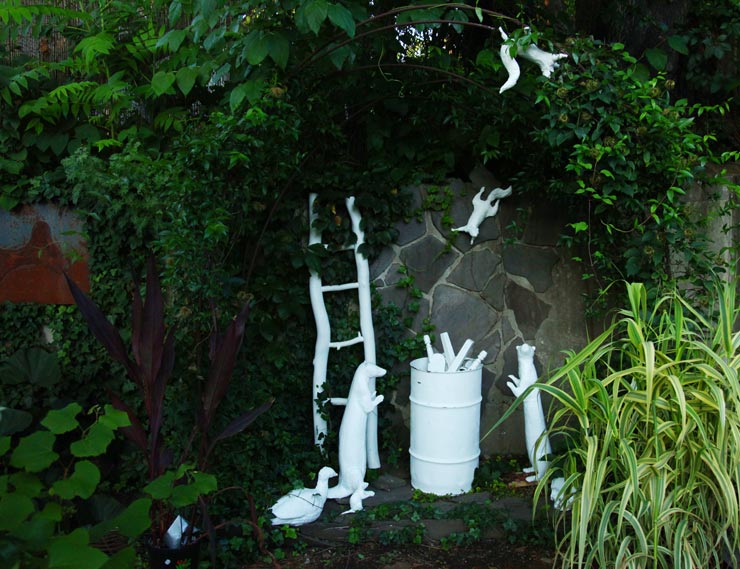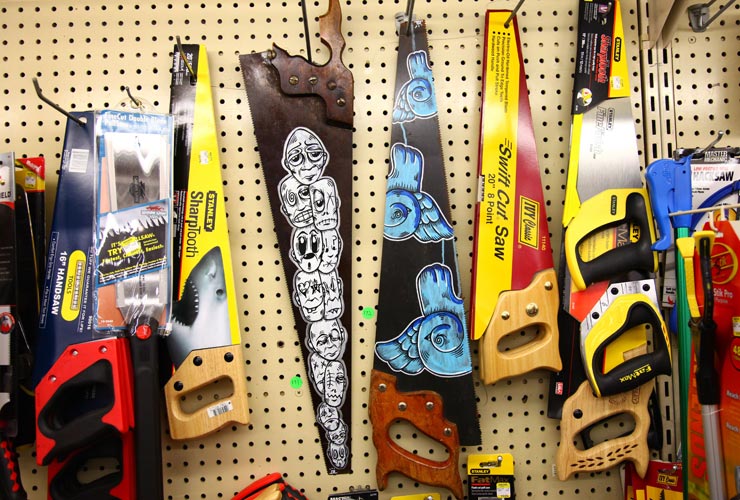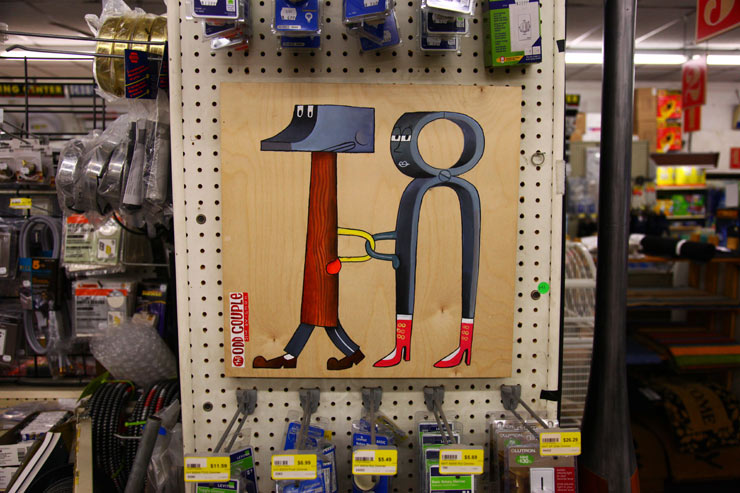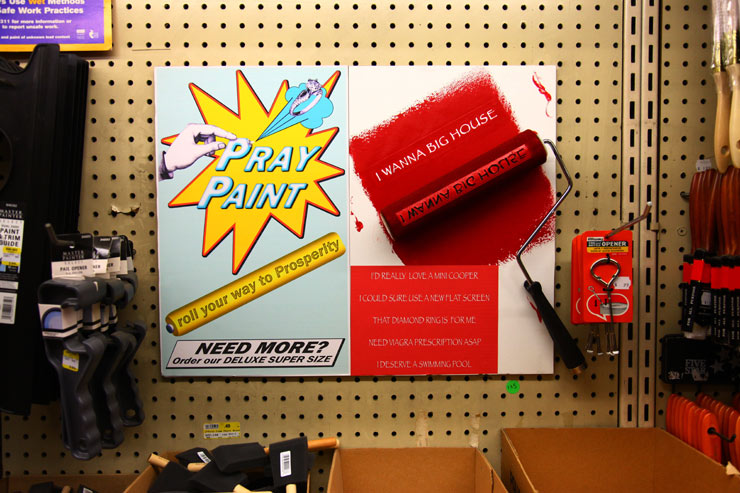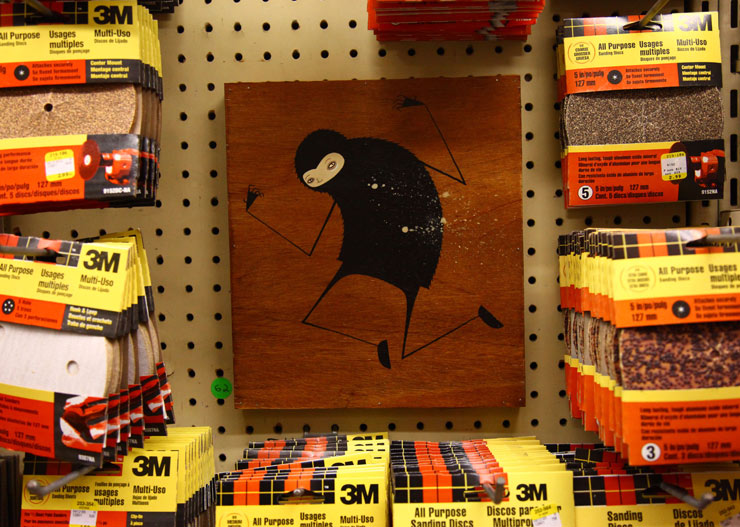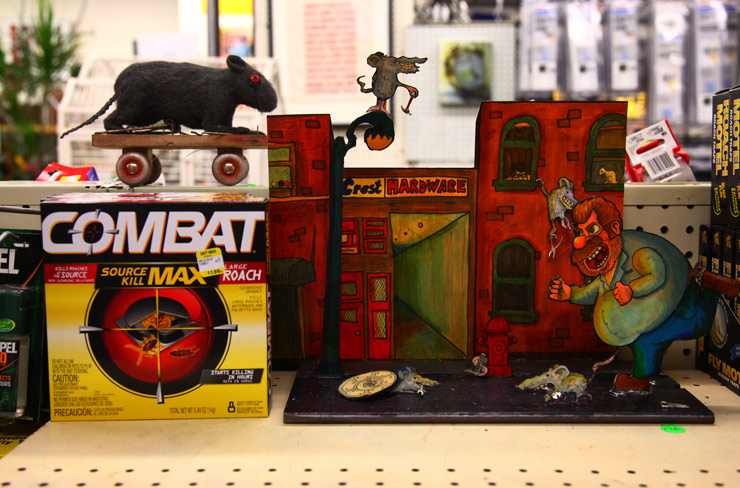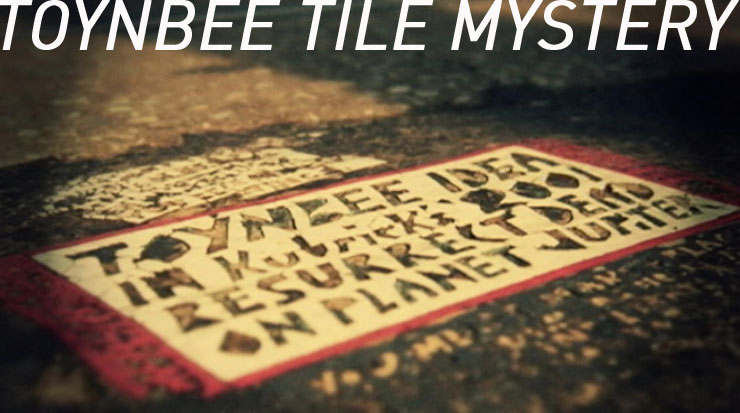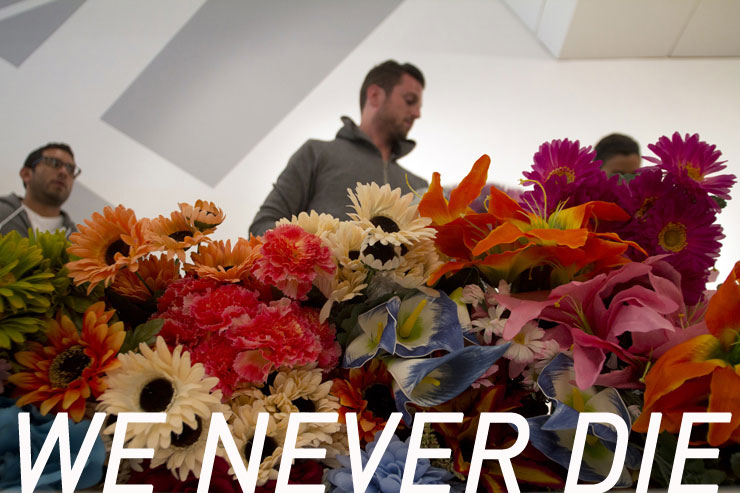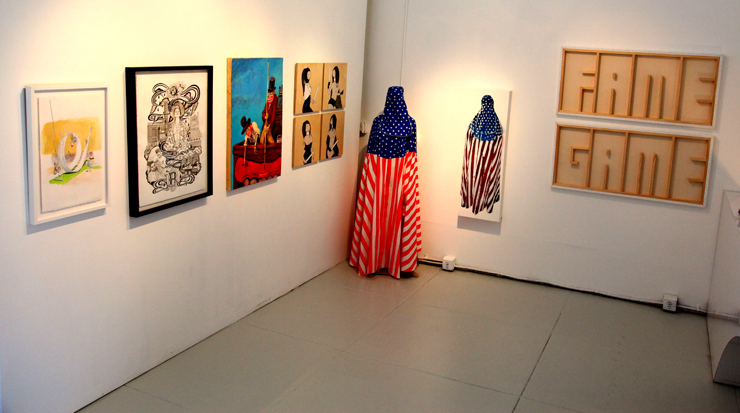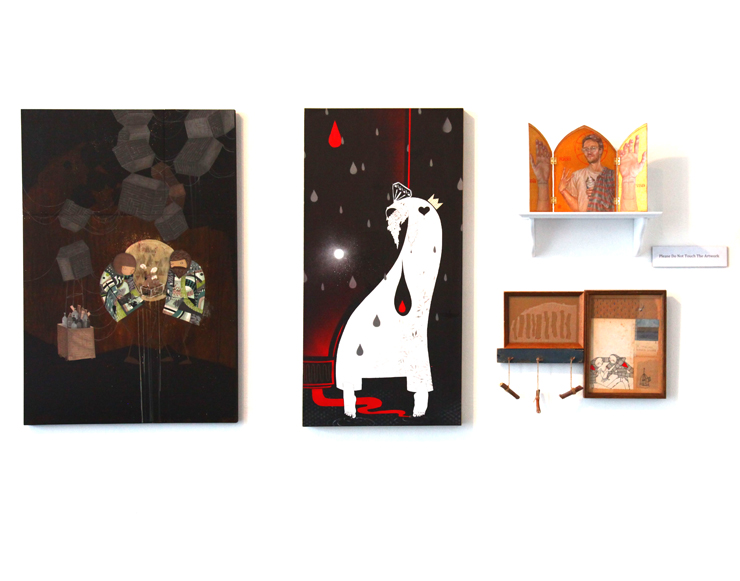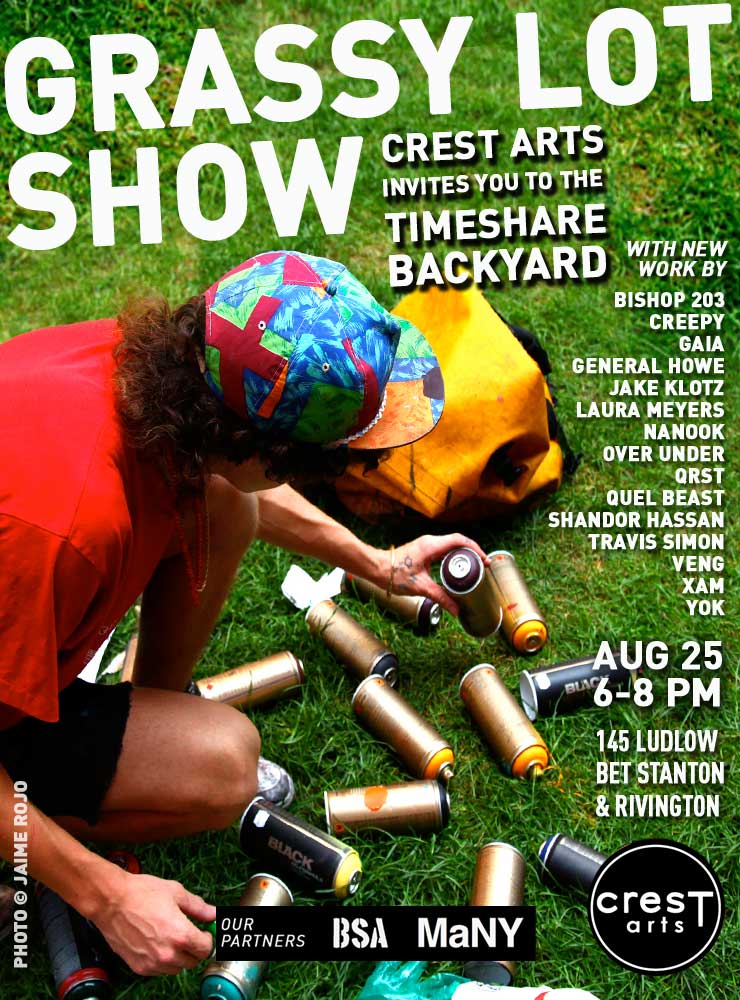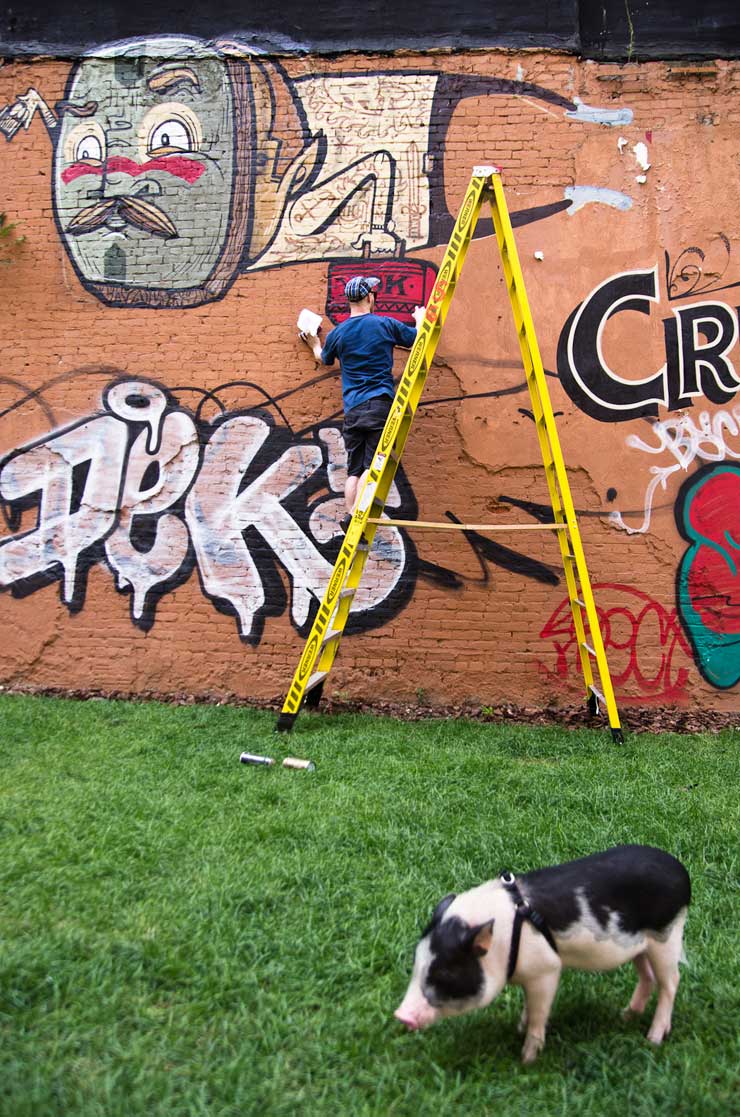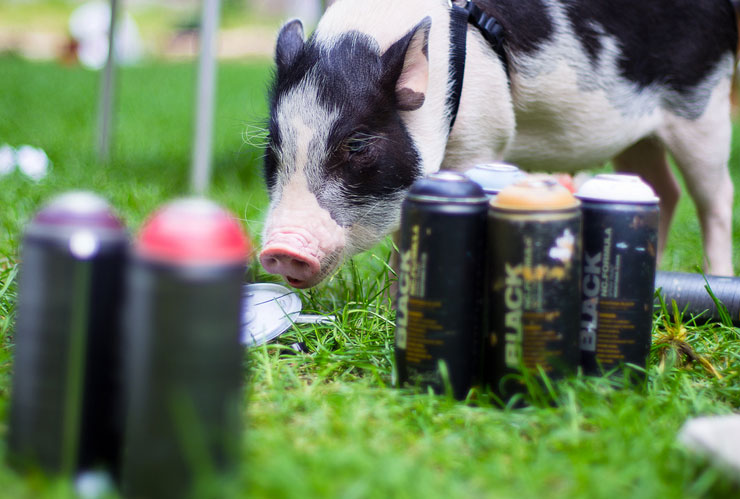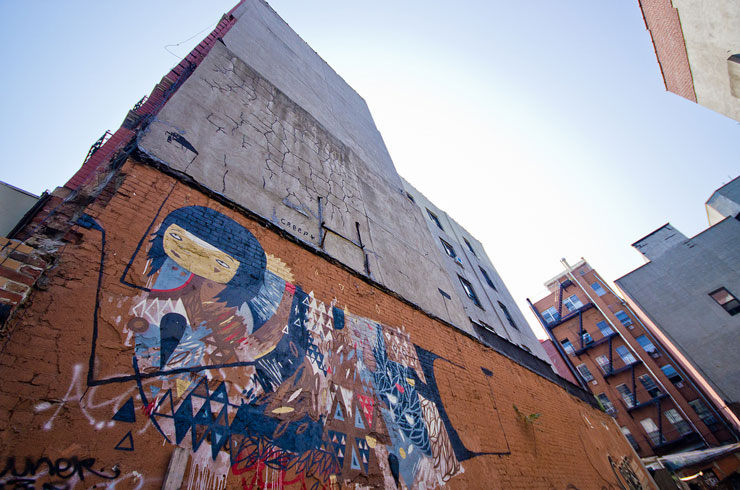Travelers of all sorts frequently talk about planning their trip so they can really get to experience a new environment that reveals character. You know, get off the beaten path, discover some of the local flavor, really experience a city. Imagine dining and sleeping your way down the length of Manhattan for a month on furniture you built yourself. On Broadway. Every day and night.
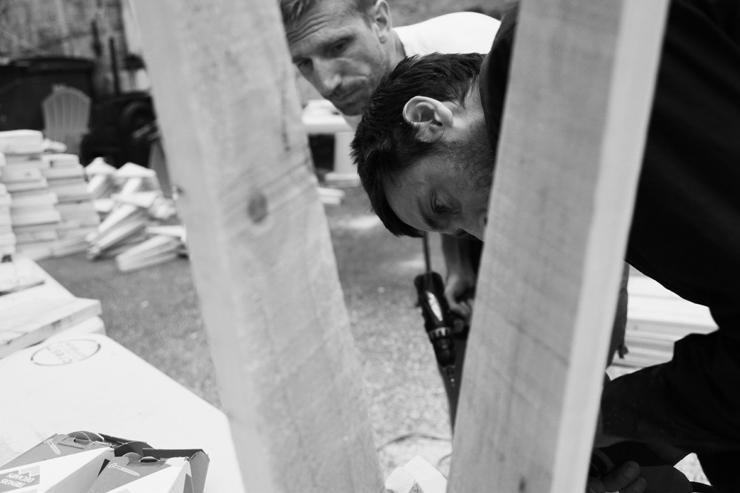
Boijeot . Renauld (photo © Jaime Rojo)
Laurent Boijeot and Sébastien Renauld began their month-long journey in Harlem on 125th street over the weekend with their handmade wooden furniture and immediately they had guests over to their place. With a coffee pot brewing and comforters, boxy retro luggage, and benches stacked nearby to convert later into beds, the Street Artists/public artists/sociologists from Nancy, France invited passersby to sit for a minute, perhaps a little longer if they had the time. Almost instantly, the artists began meeting New Yorkers of all kinds.
“A chair is a really simple tool and everybody knows how to use it,” explains Mr. Renauld, an architect, referring to their instant home as part props, part instruments of interaction.
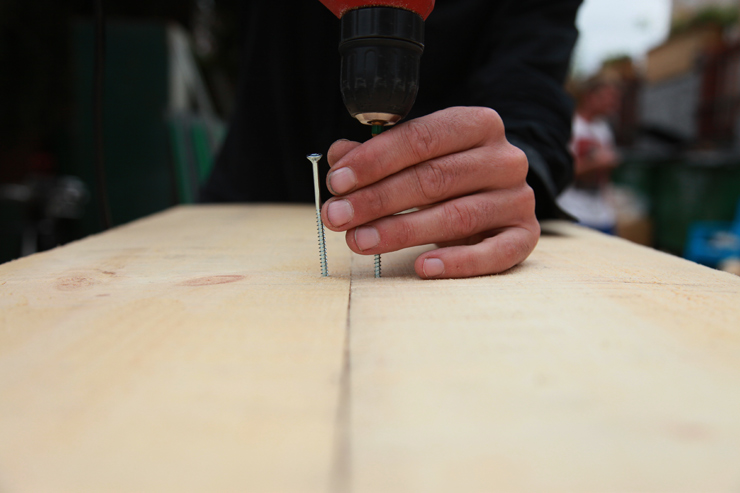
Boijeot . Renauld (photo © Jaime Rojo)
Boijeot, the one who actually studied sociology, explains that psychologically and symbolically the table is a great leveling force in their experiment, and all manner of individuals share it with them. “So there are no classifications. There are no rich people or poor people. You can speak freely at the table and we see that people go very quickly into a sort of intimacy. When we sit at the table sometimes we see that within only a few minutes we have such a deep relationship with one another, with private life stories coming out.”
The project, or “action”, has taken many configurations in a handful of European cities, expanding into greater numbers of beds (50 in Nancy) or contracting to just a few beds and tables that are regularly carried by hand a few blocks at a time (Venice, Paris, Basel, Dresden). Here in New York they are intending to move their temporary home about five blocks at a time over the next month, including through many residential and commercial neighborhoods along the Great White Way. Although they have found that what they are doing is legal in New York, they know that not everyone may welcome them.
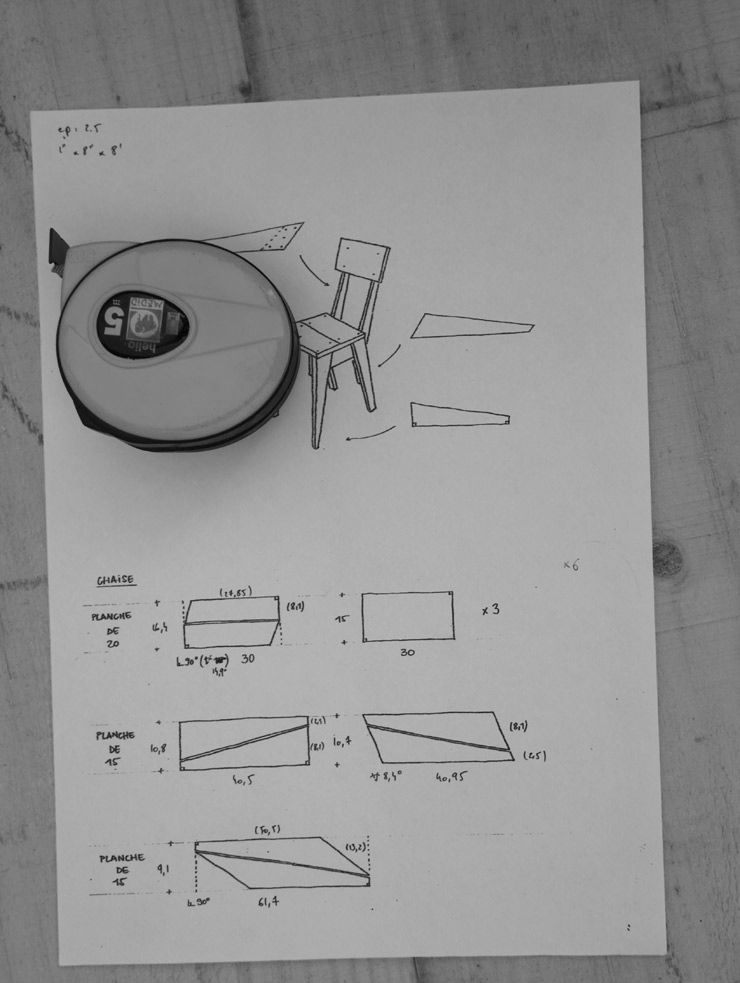
Boijeot . Renauld (photo © Jaime Rojo)
“Actually sometimes you have more problems with the rich people than the poor people,” says Boijeot, and instantly you recall that much of Manhattan has become an island for the wealthy over the last two decades with working class and poor pushed to the outer boroughs. But as long as the walking path from the Uber/limo/Town Car to the doorman is unblocked, maybe these artists will be allowed to share a cup of coffee and a conversation in front of their building.
This Saturday night on 120th Street it is relatively quiet here in the heart of many hulking Columbia University buildings, a block from the mammoth Riverside Church, with the elevated train occasionally roaring overhead and nicely heeled students in conservative clothing ogling the six guests eating dinner at the plain plank table as they walk by.
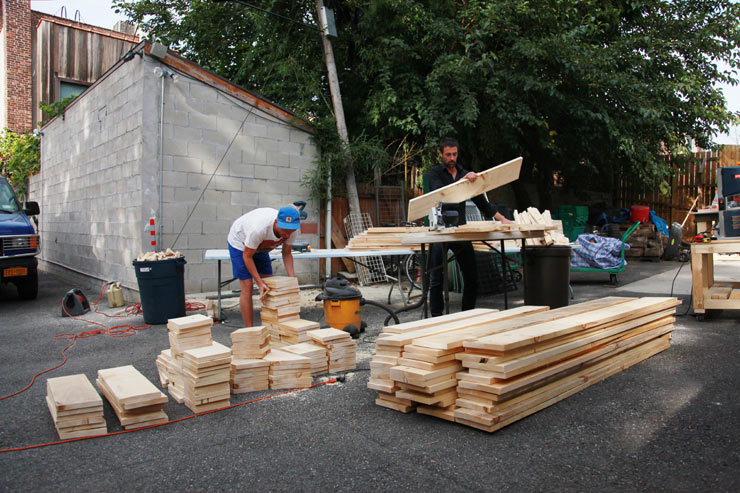
Boijeot . Renauld (photo © Jaime Rojo)
“One of the common things we discover – everybody, every city, every culture is different, of course and every individual is different, but one thing I have noticed in my experience, is that people are up for two things, evil and good,” says Boijeot as he scans the street scene gently. “When we do this action we understand that we are giving people the possibility of being evil or good, and of their free will, they mostly decide to be good. If you present the situation where they decide for themselves, most of the people are very helpful.”
Has the living art project ever taken a turn for the worse? Renauld says that usually people are very friendly, but occasionally they have encountered a person who will try to steal from them or otherwise harm them, and they are always aware of the possibility. The best part of sleeping on a bed is that a passerby doesn’t know if you have a weapon, he says.

Boijeot . Renauld (photo © Jaime Rojo)
“When we sleep they never know what there is under the blanket,” he says, “We have accumulated perhaps 4 or 5 continuous months sleeping on the street but we have only had two times when there was trouble – we have had two guys who have jumped on the bed while we sleep. But the good thing is that they can expect anything from the guy under the blanket. We could have a knife, they don’t know.”
Both self-professed pessimists, the artists, who refer to themselves and their visitors as “authors”, say that these full-immersion public art projects performed over the last 3 or 4 years are slowly turning their own perceptions about people into positive ones.
“I have to say that we are not optimists as persons but these experiences are giving back so much good to us and showing us humanity that I am like, ‘Wow I am a pessimist but still I know that this is possible,’ ” says Renauld.
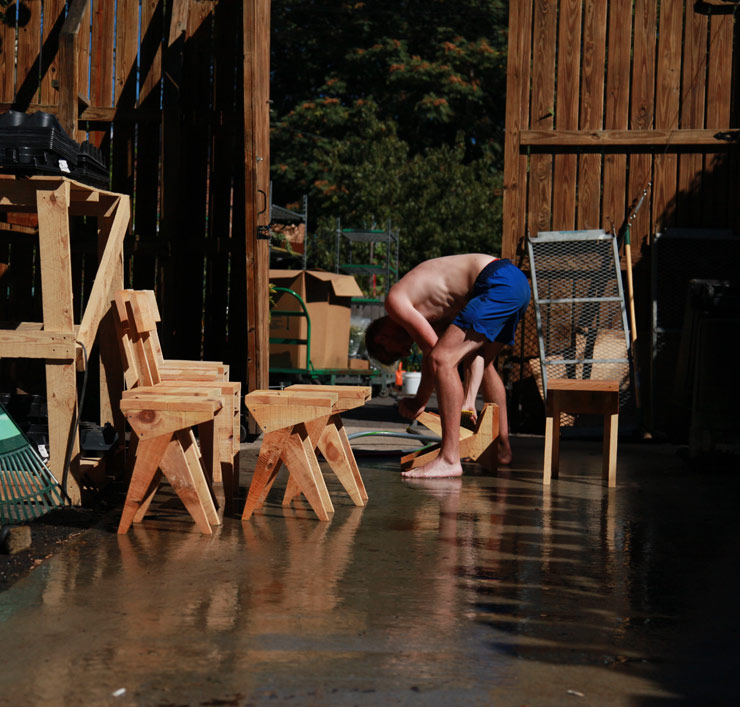
Boijeot . Renauld (photo © Jaime Rojo)
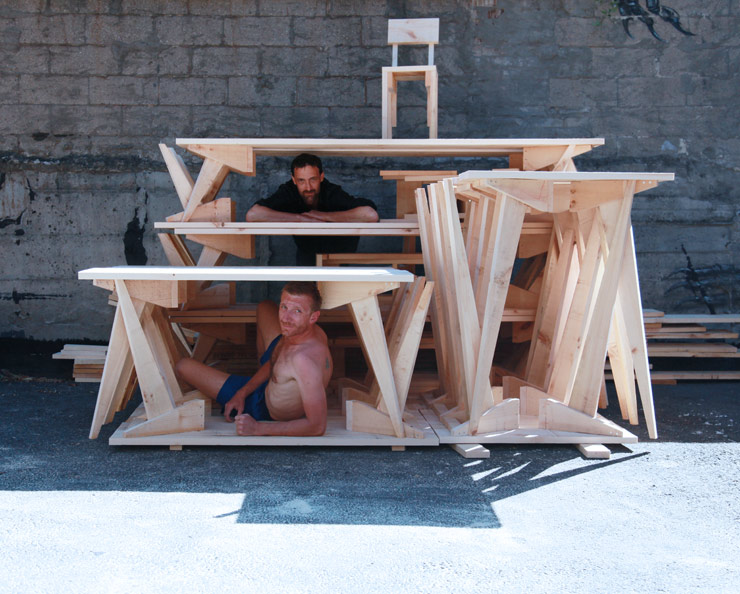
Boijeot . Renauld (photo © Jaime Rojo)
“There are so many stories,” says Boijeot, “We know that when we are old we will have time to tell each other all of these stories from these years. As a sociologist I cannot make any generalities about this, because first, it is wrong. But the other thing is that there are many little stories that make them individual, human.”
As traffic noise and sirens occasionally drown out conversation (as well as the impromptu performances of a boisterous opera singer who has stopped by with stories and excerpts from Wagner), both artists explain how local businesses allow them to use the bathroom and how many people offer to let them shower at their homes or bring them food and other gifts.
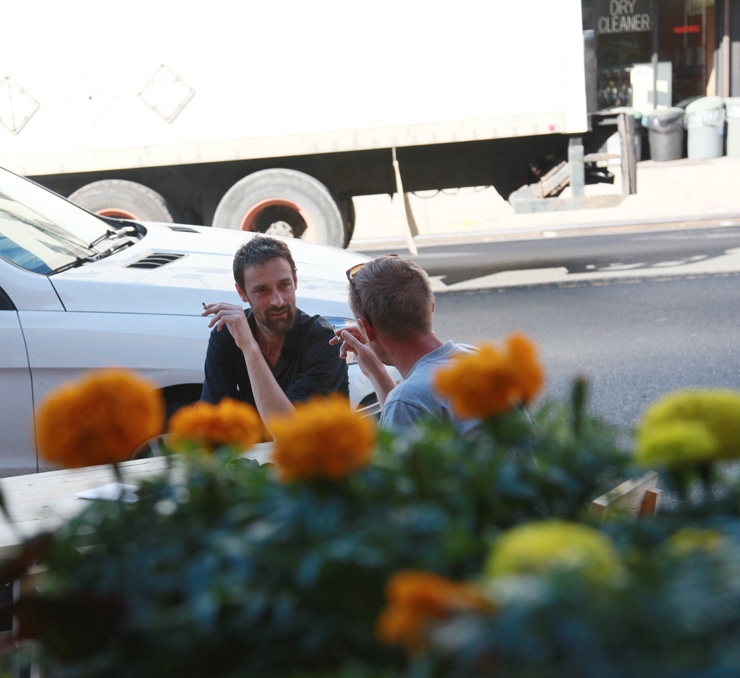
Boijeot . Renauld (photo © Jaime Rojo)
“People are so kind with us – bringing food and things to say “thanks”. Cakes… in Germany we received so many gifts, little hand-made things,” says Boijeot. Can they recount one particular story as an example?
“No, there are so many,” says Renauld.
“Yes, I can tell you one,” offers Boijeot.
“One night we were with a couple at the table in Germany. It was almost seven o’clock at night and we asked them where we could go to get wienerschnitzel, a good proper version of the traditional meal. So I asked the guy if he knew where we could go to have it and he said, ‘Yes, we have the best restaurant in town.’ But then he tried to give me the directions – ‘turn right, turn left, go two blocks, turn right…’ . I said to him, ‘I’m lost, I will not go.’ So the guy said, ‘Okay, just wait for one hour.’ And this guy and this woman went to the supermarket, then back to their home and they cooked the wienerschnitzel and other dishes themselves. Everything. Within one and a half hour they arrived – it was like a full meal – potato salad, a green salad, wienerschnitzel, and soda. The guy said that because he could not explain where to go he decided that he would make the meal for us himself.”
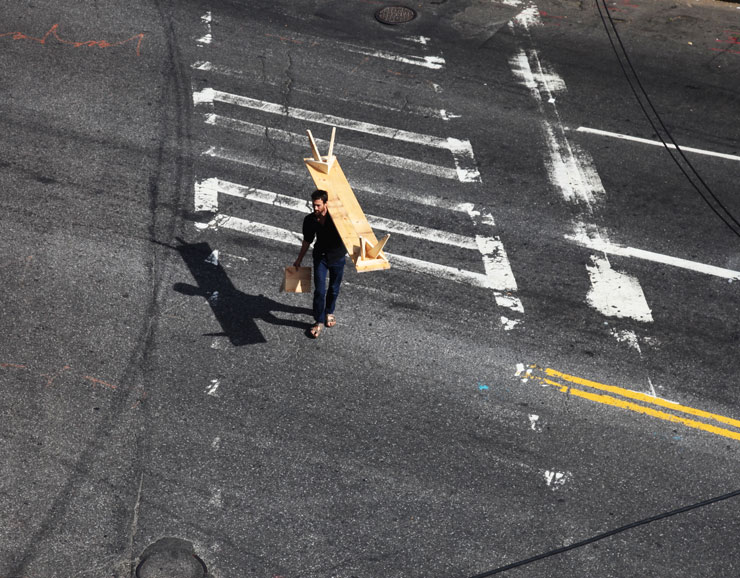
Boijeot . Renauld (photo © Jaime Rojo)
Soda? No German beer with dinner? They both assure us that neither of them drink on the street when they are doing these mobile installations in cities because they need all of their senses to be alert. Renauld says that in their practice they find that after a week of living outside on the sidewalks of a city they gradually develop a certain higher sensitivity and awareness about all of their surroundings, a heightened sense of the complex interactions that taking place around them.
“After about one week we feel almost like we are in a trance,” he says, “like we are totally open to everything. So if you are to smoke or drink you are going to miss things.” Smoking, in this case, does not apply to cigarettes, as the two are continuously hand rolling a fresh one and using it for added stylistic emphasis and punctuation during conversation.
“What we are getting right here right now is the best shot of reality – no drugs can be compared to what we are experiencing,” says Boijeot. “We never know what is “the show”. Are we the spectators of the city and seeing the show or is it the inverse?”

Boijeot . Renauld (photo © Jaime Rojo)
Actually, alcohol presents the artists with the biggest challenge on the street when the hour is late and revelers are stupid.
“One of our fears is about drunken people, because they have no limits,” he says as he scans the street on this Saturday night with a full moon almost reflexively. “We know that this part of Broadway is not the biggest party district. We have had some really big trouble in the past with drunken people.”
New Yorkers have the opportunity to meet the artists during this month and the guys are hopeful that they will be able to traverse the entire length of Broadway, but have contingency plans to visit Brooklynites if conditions get too difficult.
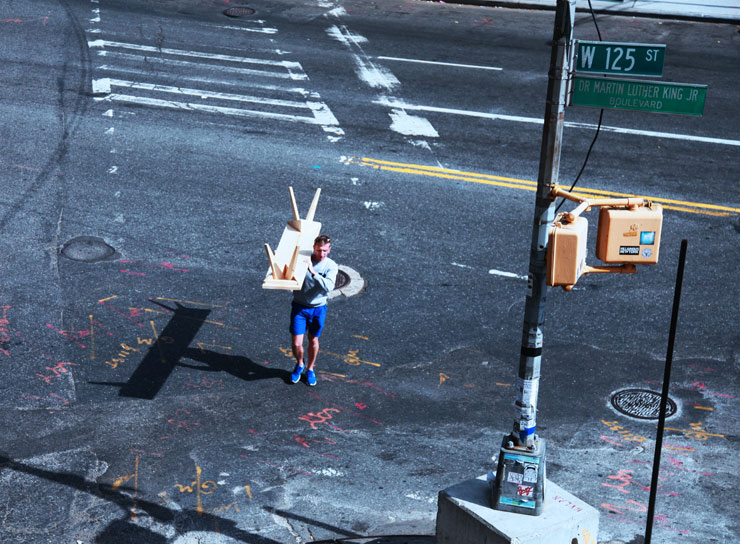
Boijeot . Renauld (photo © Jaime Rojo)
Hopefully there will not be too much rain.
Renauld says, “During the day it is not a big problem because we have clothes.”
“It’s not fun. And we can’t use the tools, so it’s not fun,” chimes in Boijeot.
“During the night we have a technique – we put the bed and a table over it, and we have a plastic sheet so we can create a kind of tent,” explains Renauld.
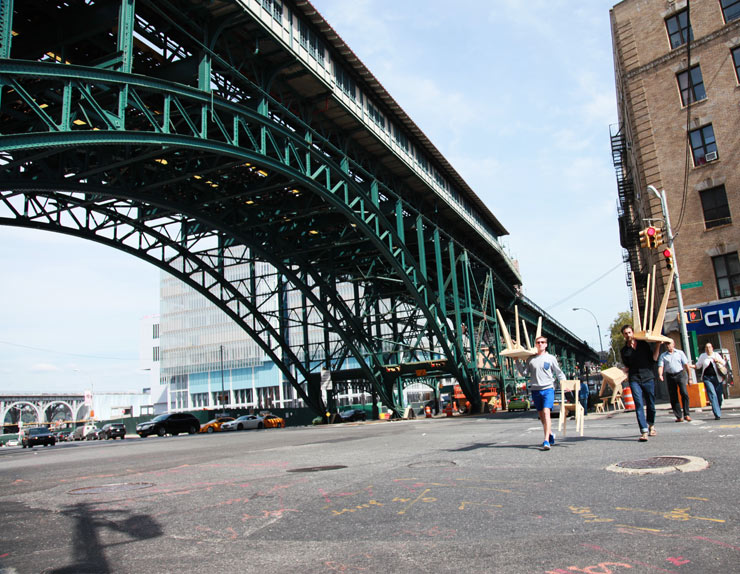
Boijeot . Renauld (photo © Jaime Rojo)
Possibility of inclement weather notwithstanding, the two know that they are in for quite a show on these streets and their determination to complete the project is more than apparent. As is their love for the experience.
“It is as if you are at the ballet,” says Boijeot. “When you take the time to sit on the chair and you see the city from a different point of view you just realize that all of this is a fucking ballet.”
“… and it is well-played because there is no make-up,” says Renauld, “it is just true ballet”.
Just wait till they get to Lincoln Center.
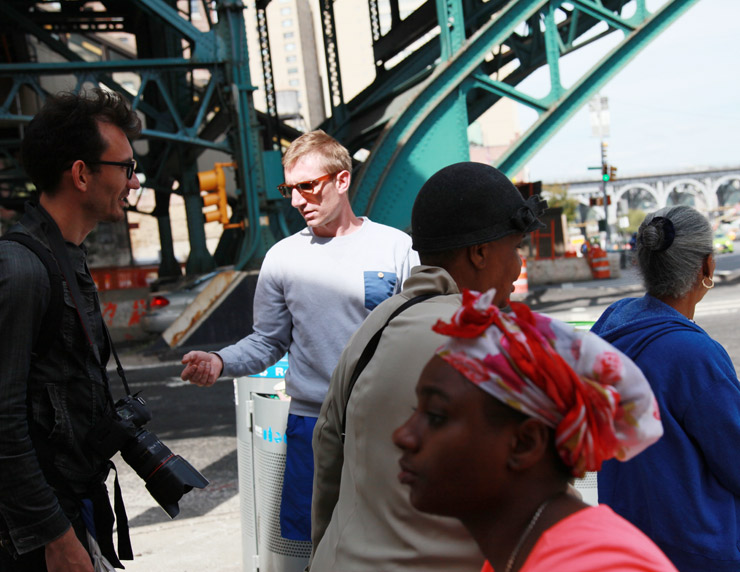
Boijeot . Renauld. Martin Clement on the left with Laurent Boijeot on the right. Mr. Clement will be with Boijeot & Renauld 24/7 for the entire duration of the project documenting the action as well as taking instant photos of the “guests” and other happenings to send back home as a gift to the backers of the project. (photo © Jaime Rojo)
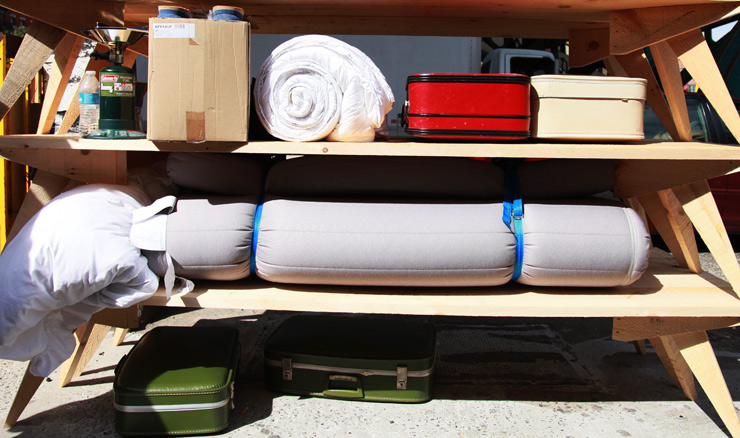
Boijeot . Renauld (photo © Jaime Rojo)
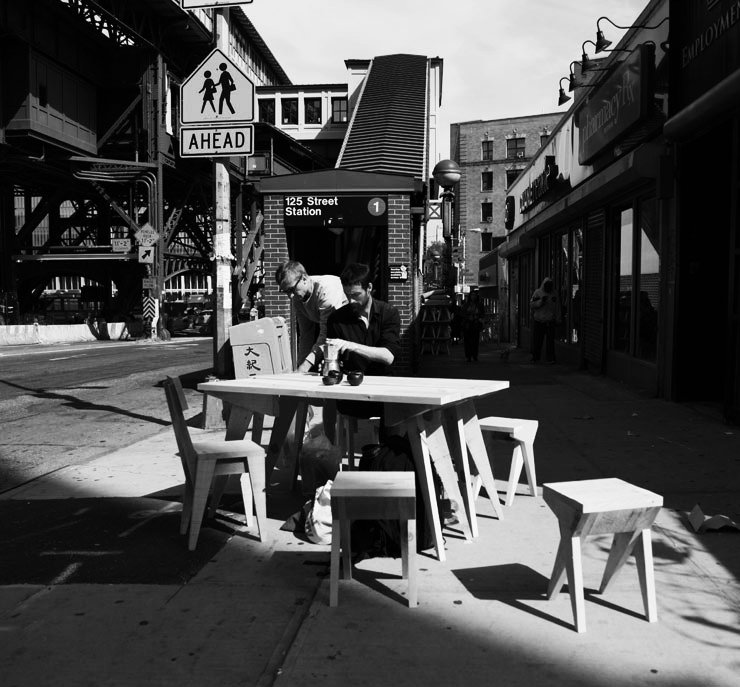
Boijeot . Renauld (photo © Jaime Rojo)
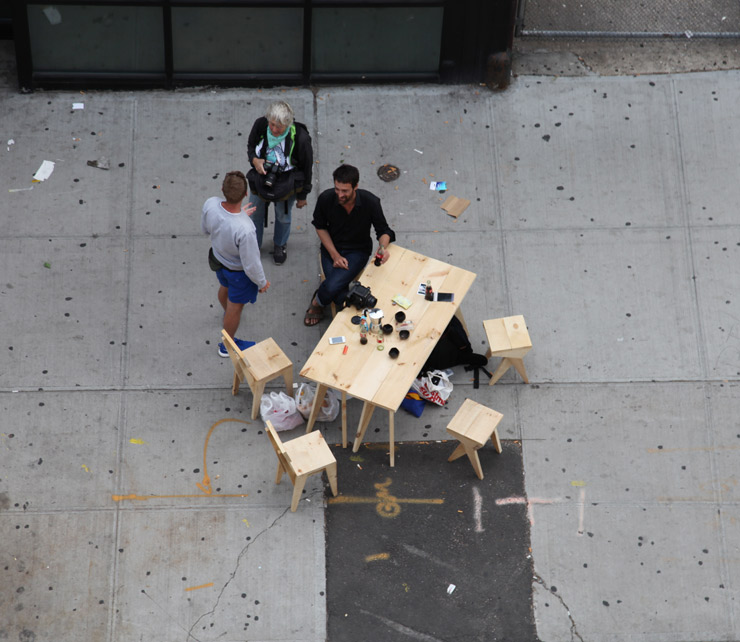
Boijeot & Renauld with their first dinner guest, Martha Cooper. (photo © Jaime Rojo)
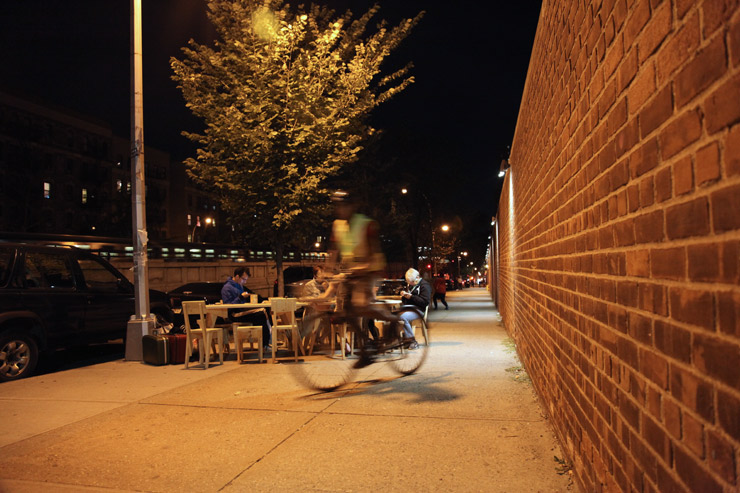
Boijeot . Renauld (photo © Jaime Rojo)
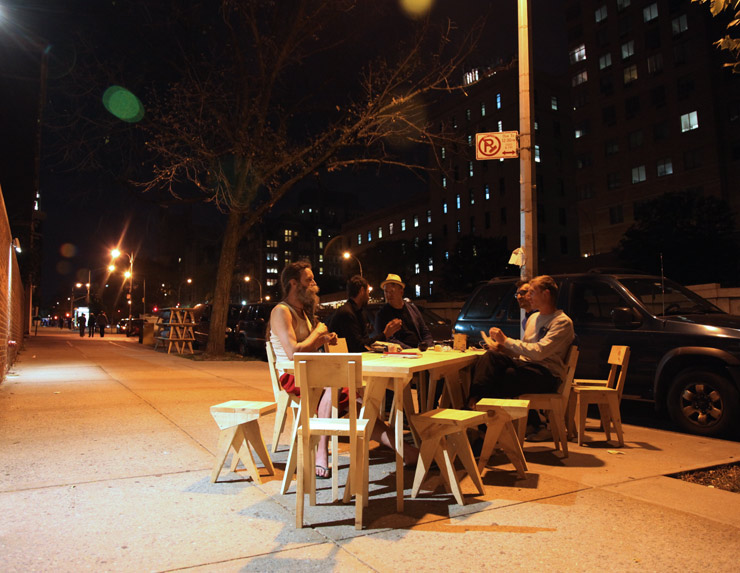
Boijeot . Renauld (photo © Jaime Rojo)
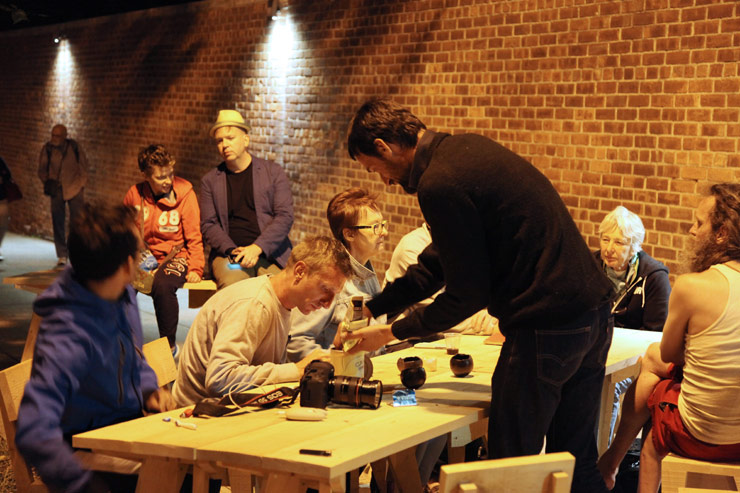
Boijeot . Renauld (photo © Jaime Rojo)
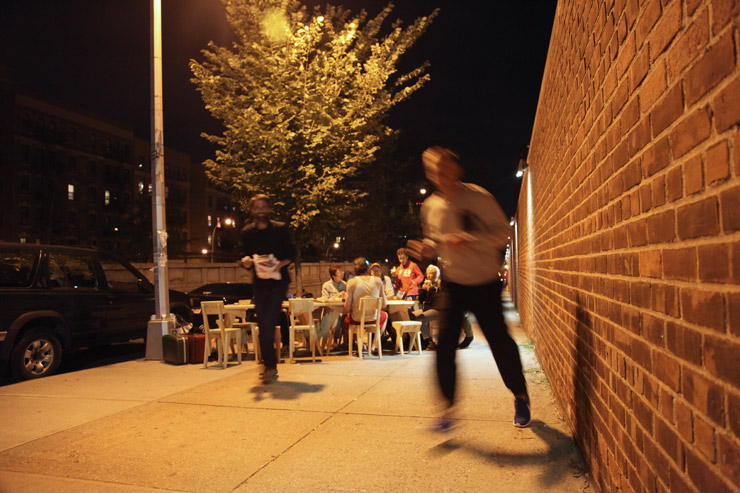
Boijeot . Renauld (photo © Jaime Rojo)
All furniture made by Boijeot and Renauld in Brooklyn with machinery and facilities provided by local businessman Joe Franquinha and his store Crest Hardware.
Our most sincere and deepest thank you goes to Joe Franquinha “The Mayor Of Williamsburg” and proprietor of his family owned business Crest Hardware for his enthusiastic support of this project. Joe has always been an ardent supporter of the arts and the artists who make it and he came through again this time. Thank you Joe.
<<>>><><<>BSA<<>>><<<>><><BSA<<>>><><<>BSA<<>>><<<>><><BSA
Please note: All content including images and text are © BrooklynStreetArt.com, unless otherwise noted. We like sharing BSA content for non-commercial purposes as long as you credit the photographer(s) and BSA, include a link to the original article URL and do not remove the photographer’s name from the .jpg file. Otherwise, please refrain from re-posting. Thanks!
<<>>><><<>BSA<<>>><<<>><><BSA<<>>><><<>BSA<<>>><<<>><>
This article is also published on The Huffington Post
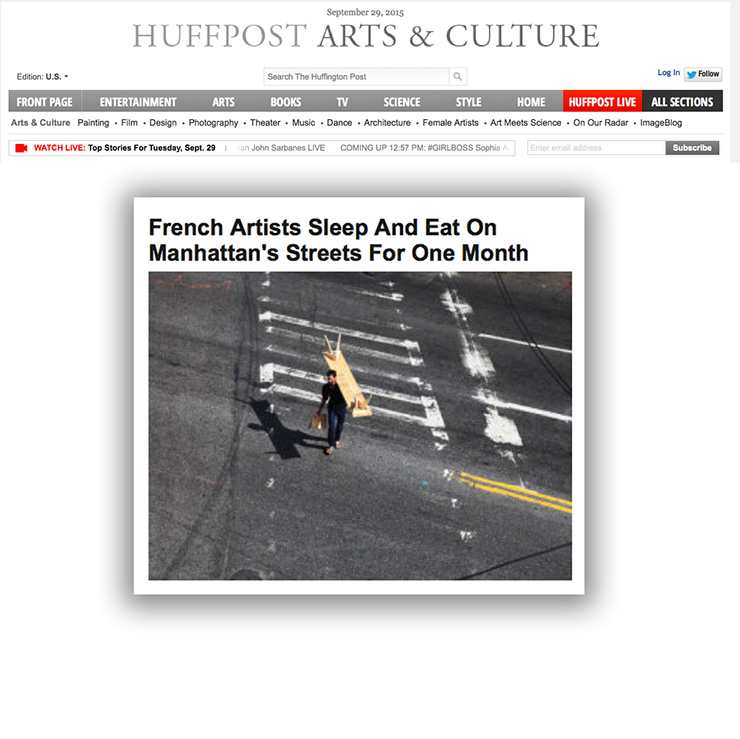
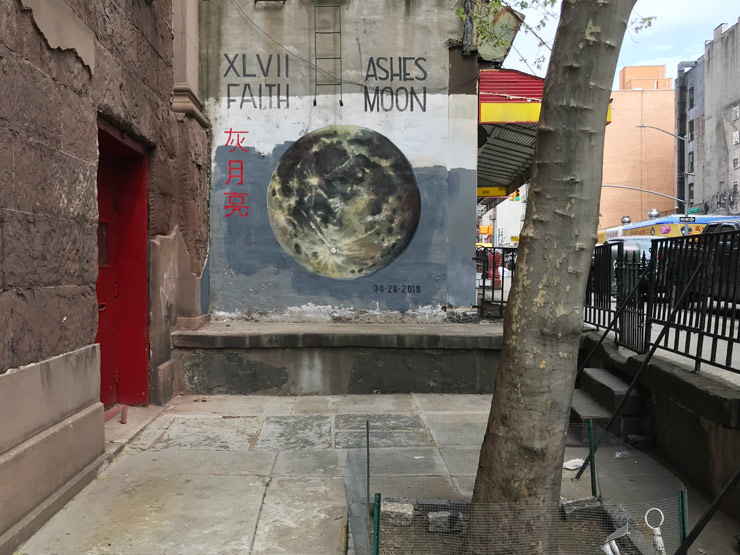

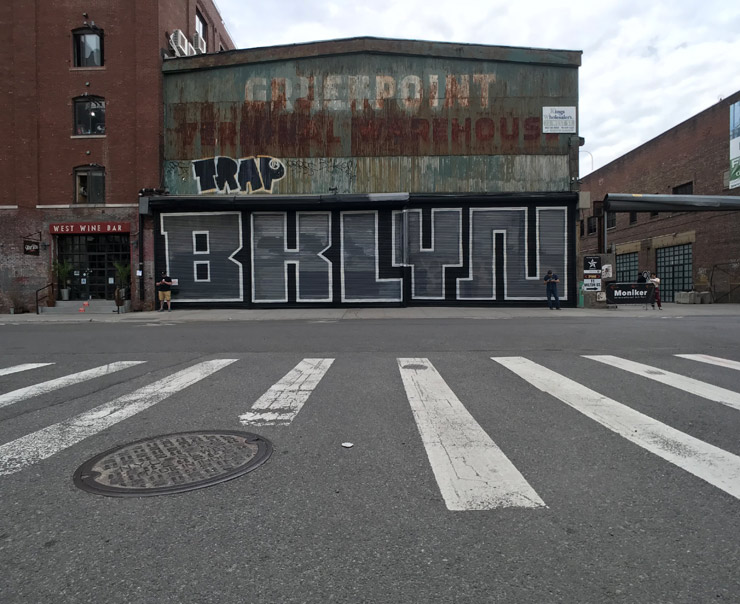
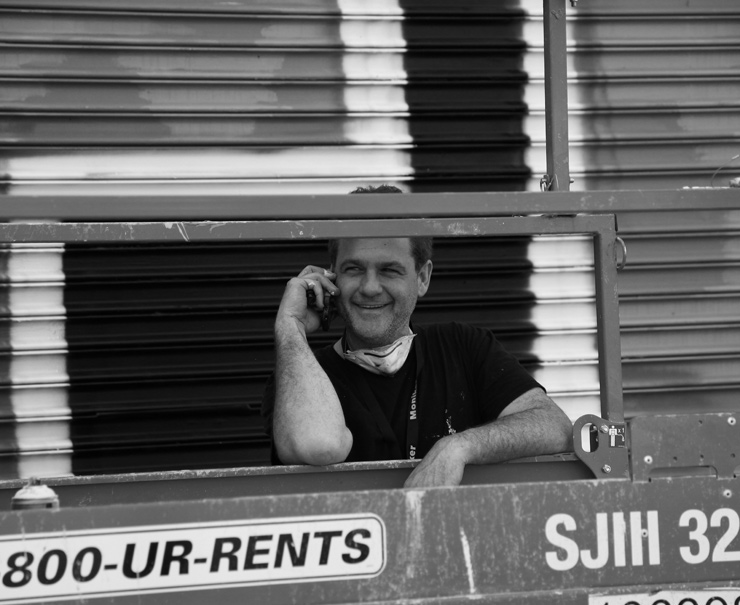
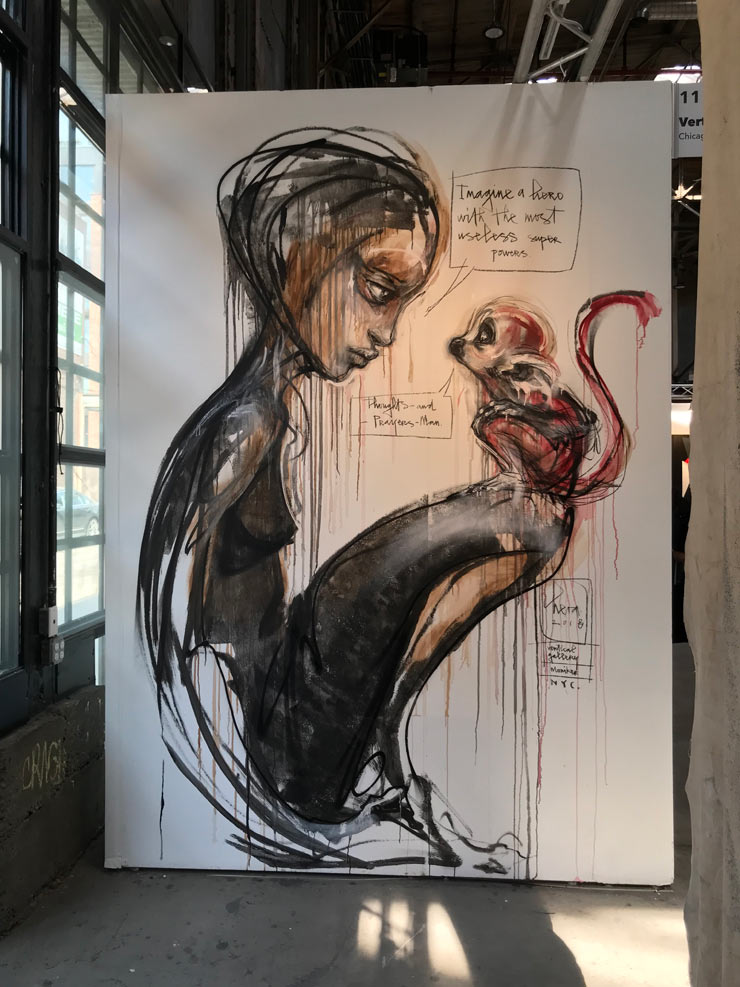
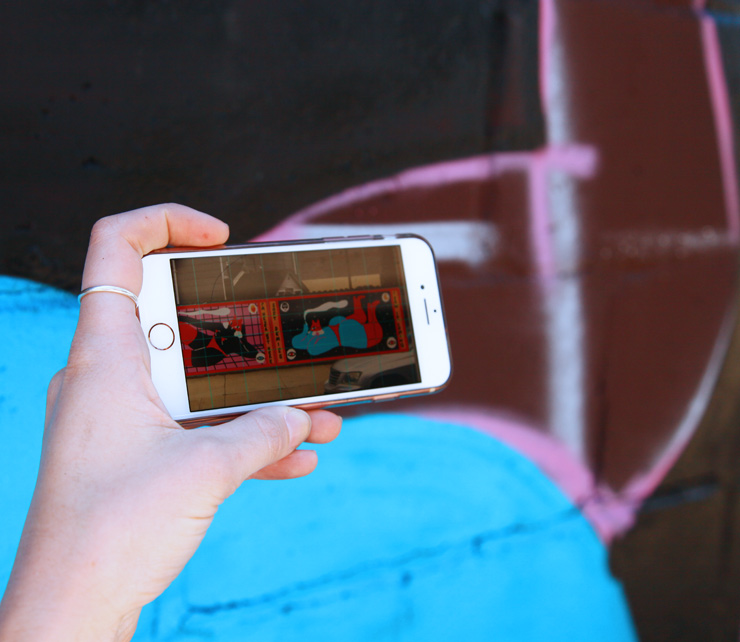
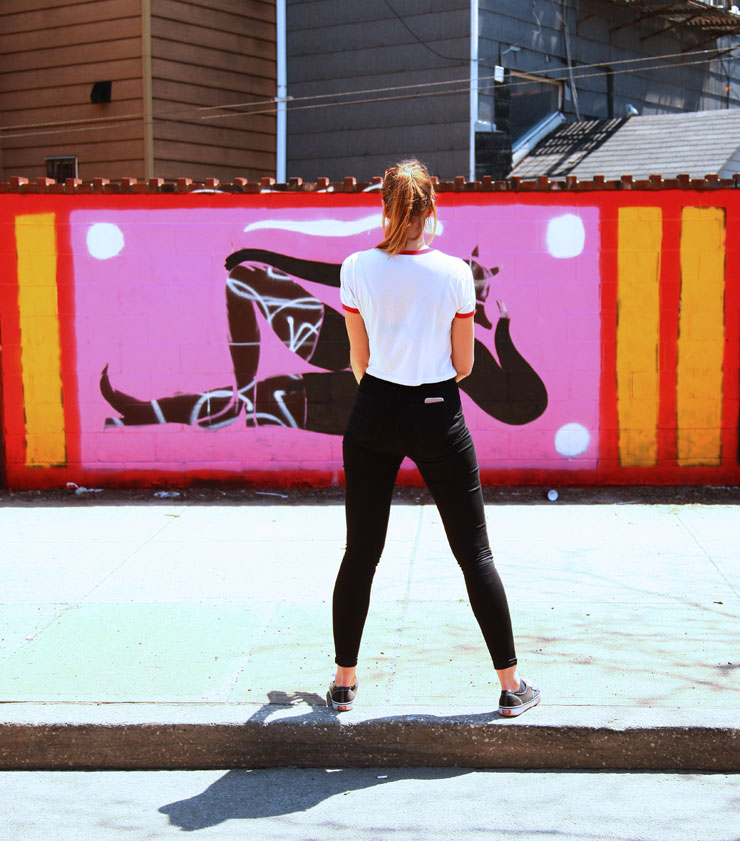
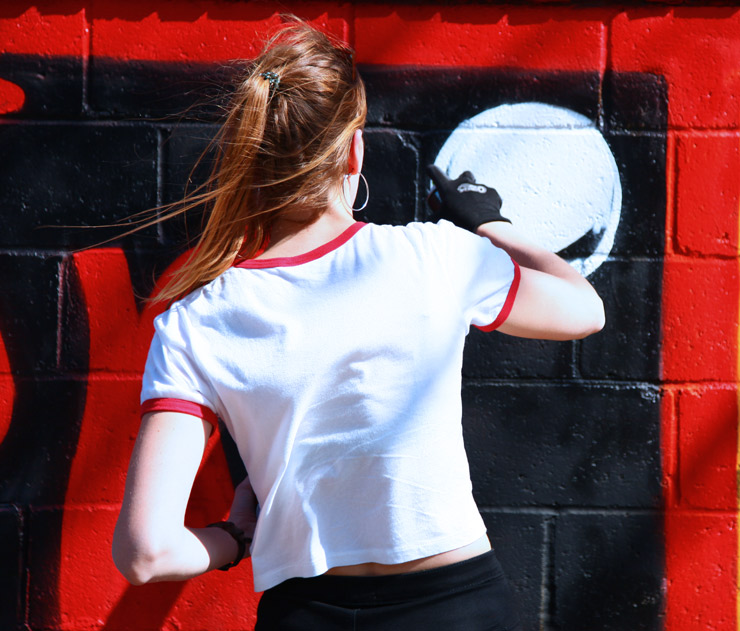
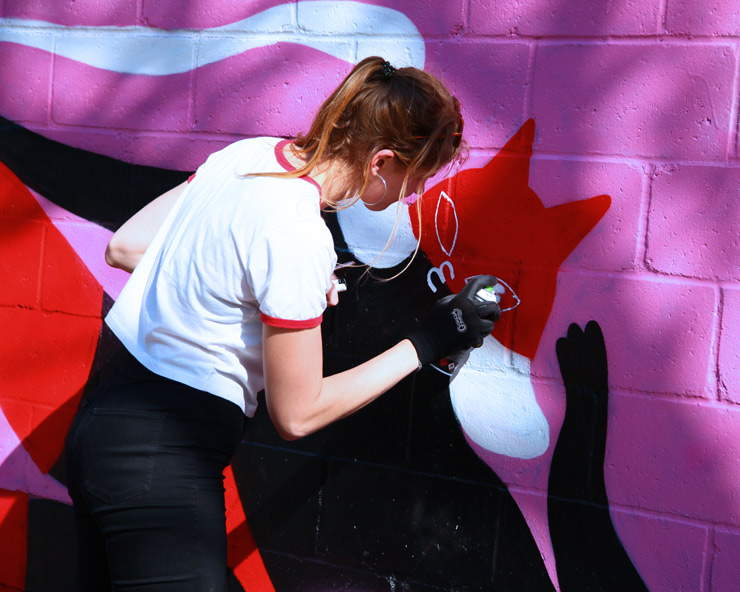
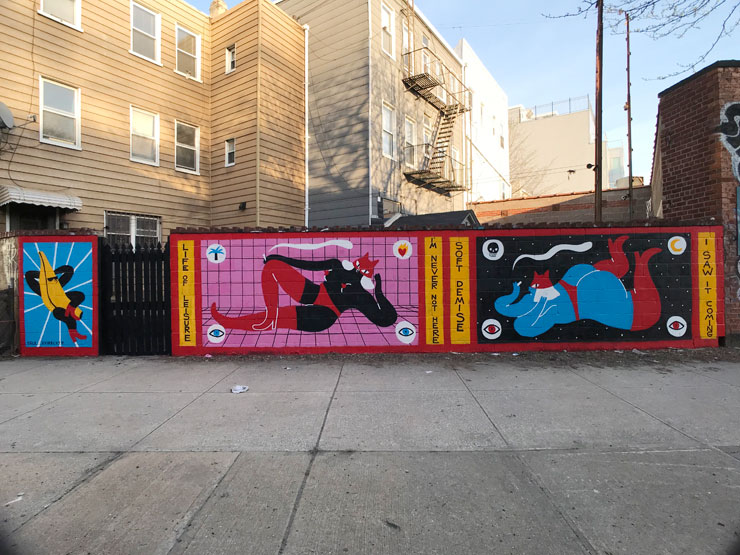
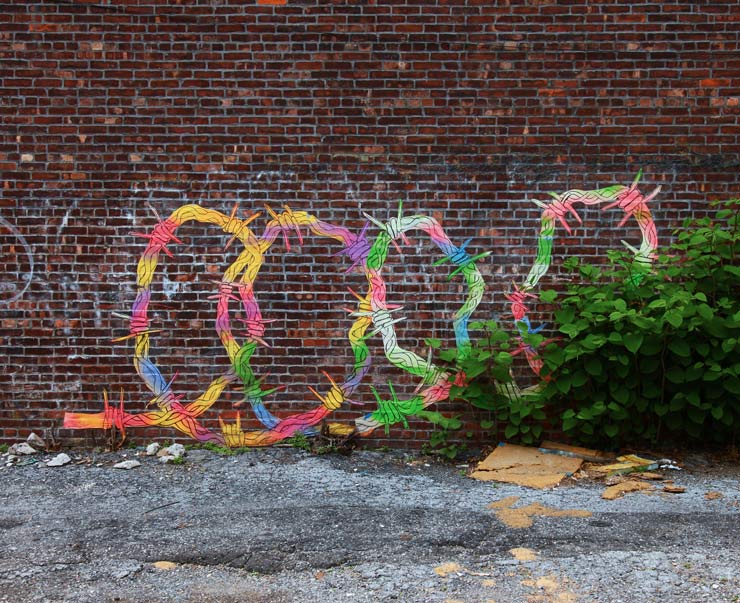
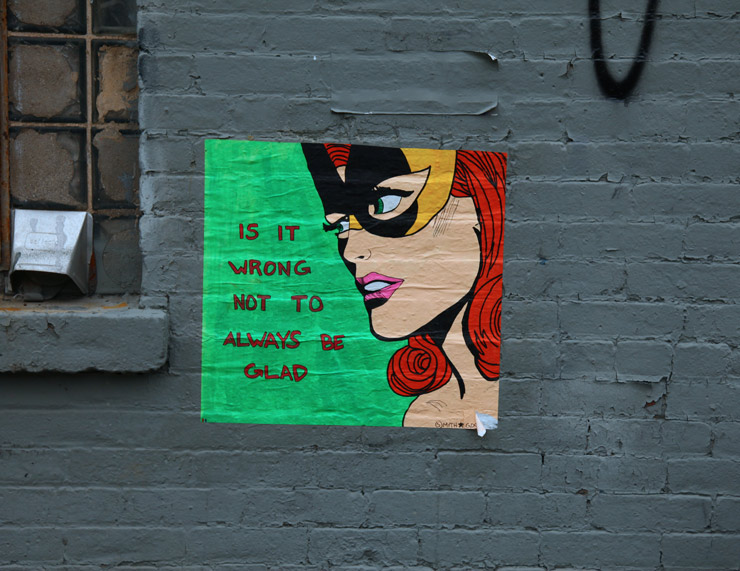
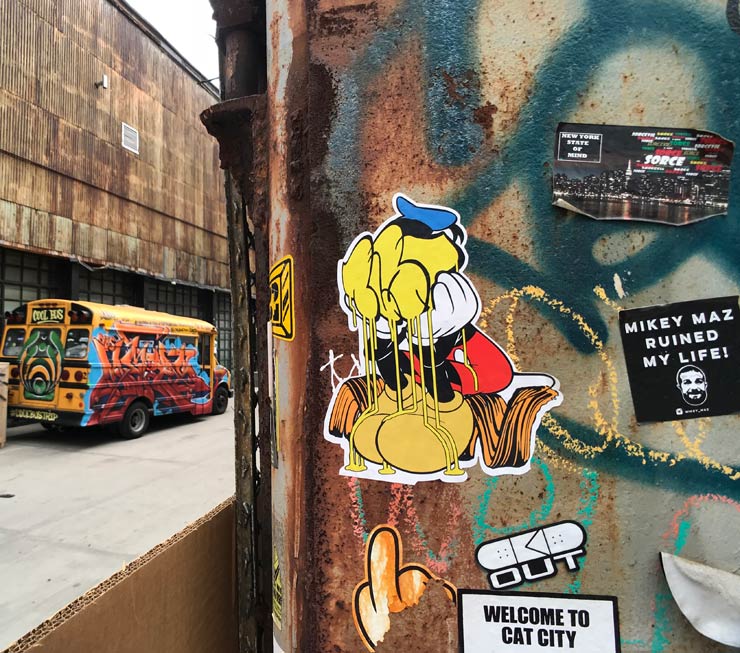
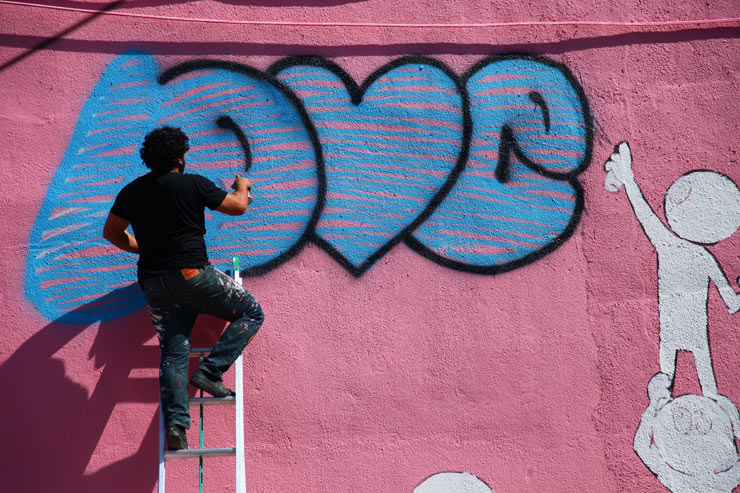
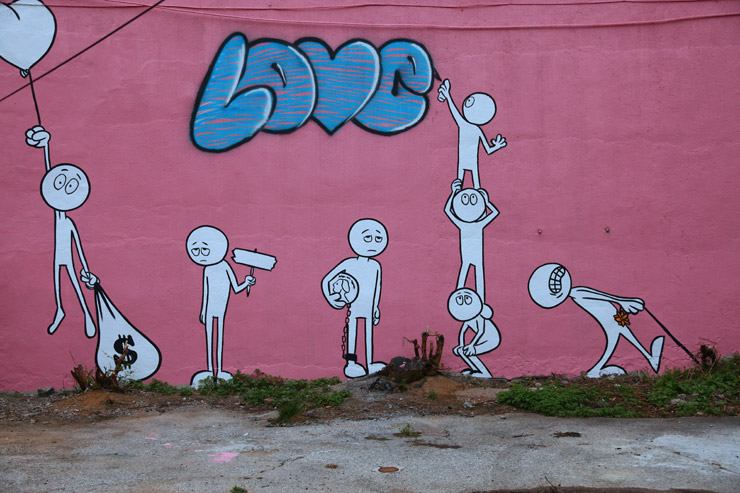
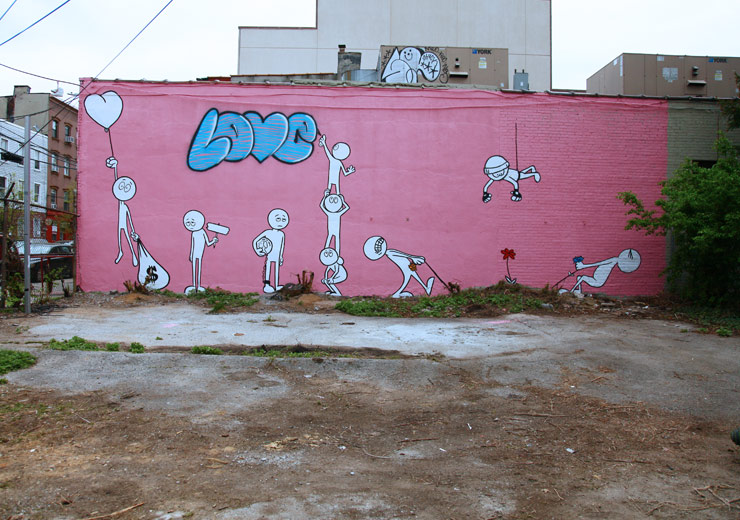
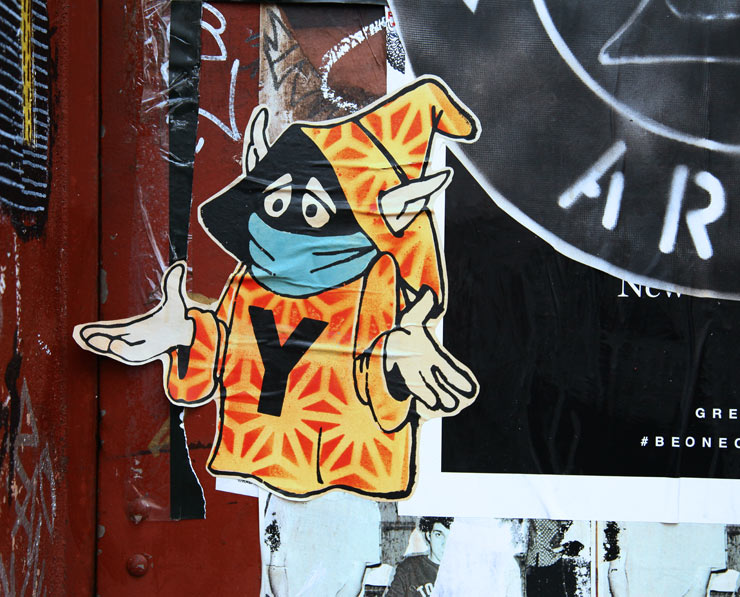
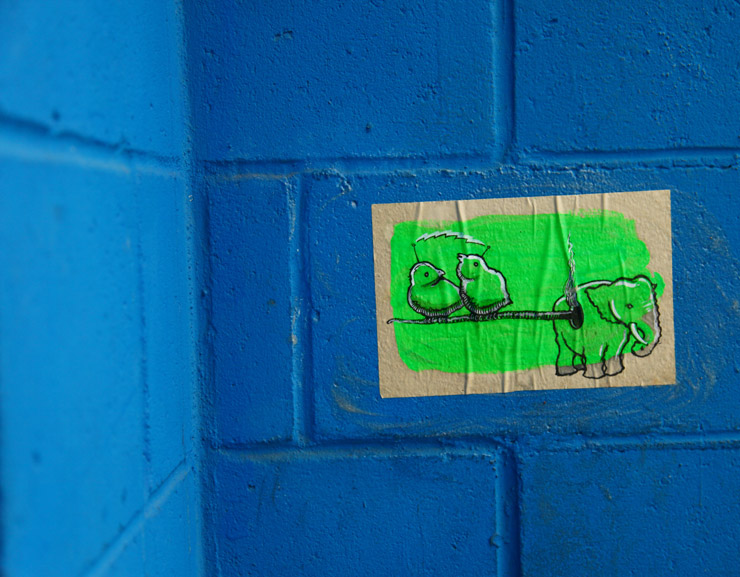
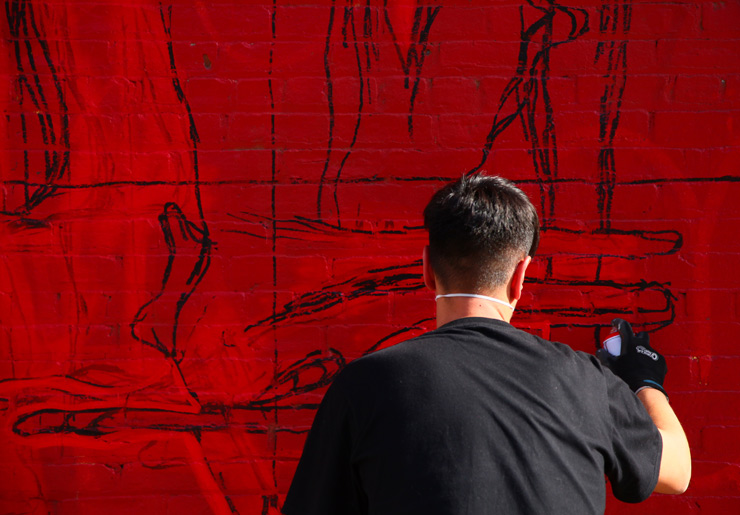
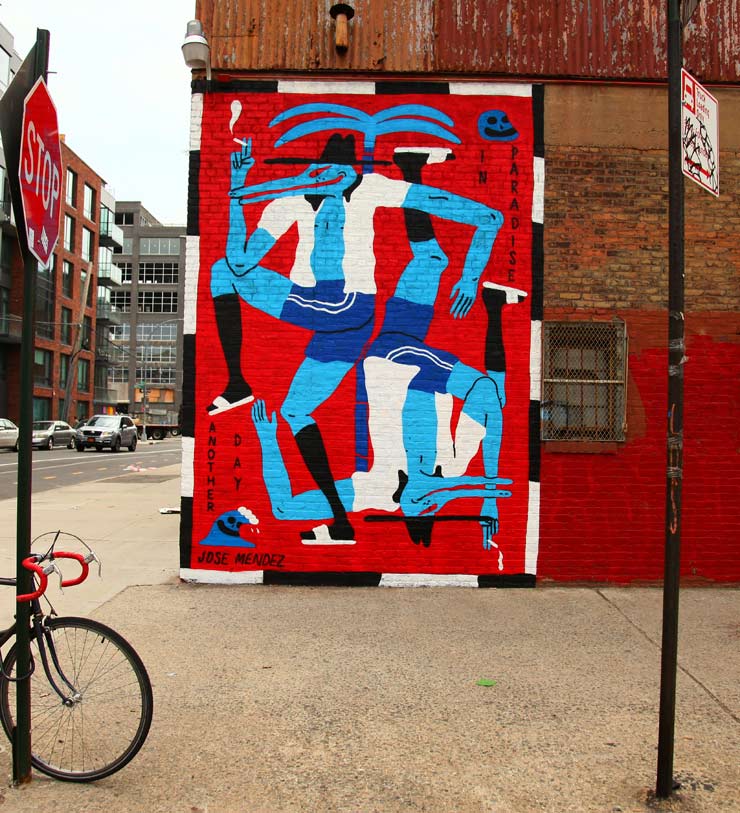
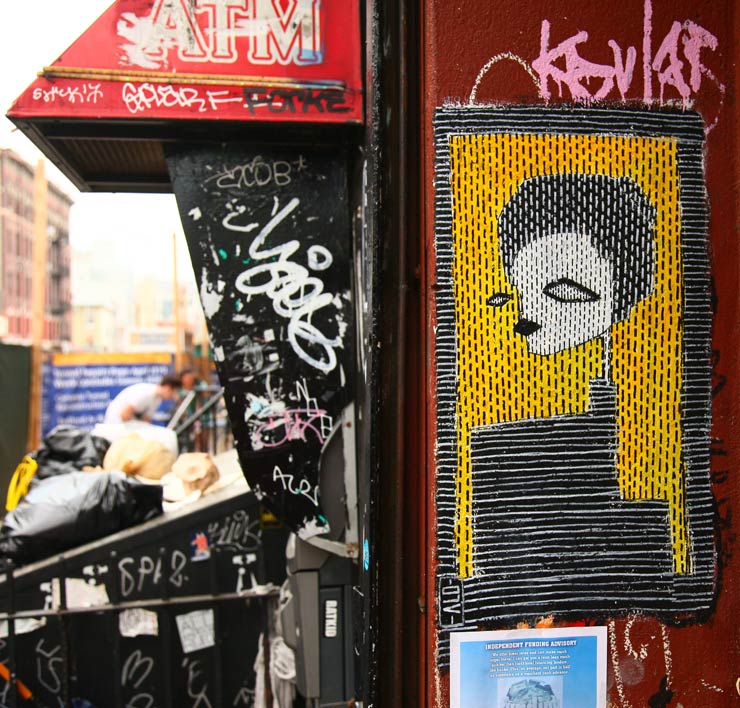
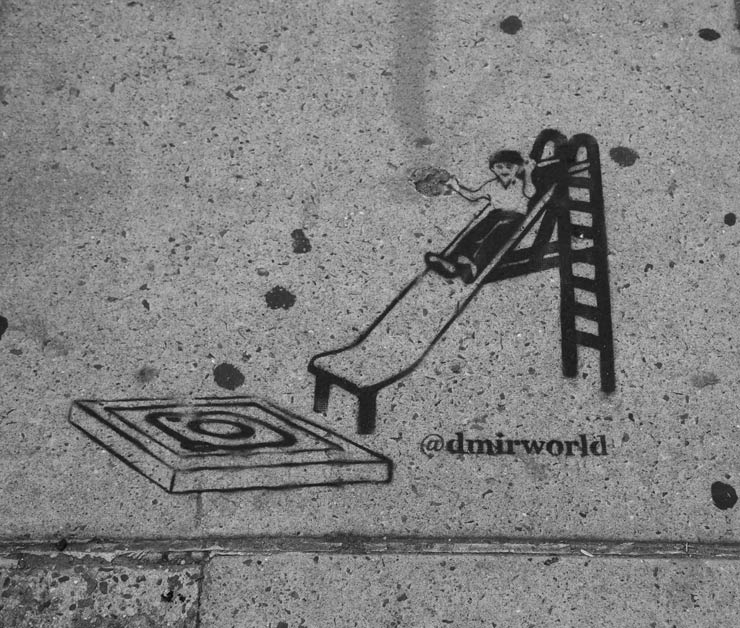
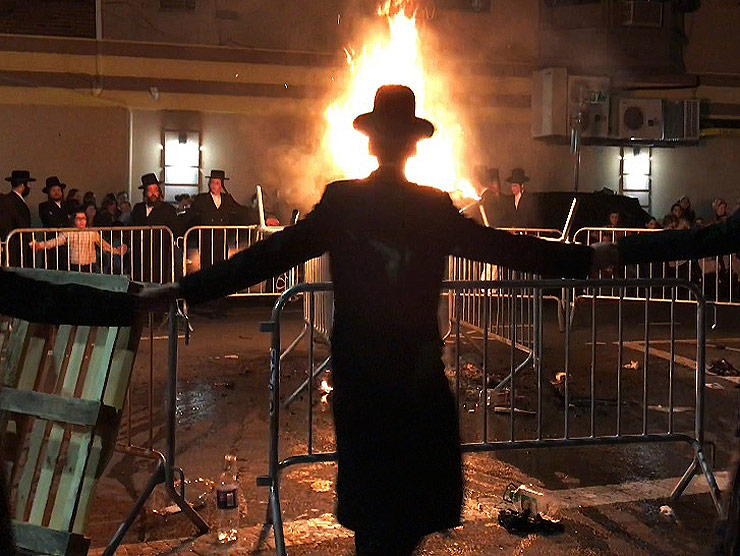
 BROOKLYN STREET ART LOVES YOU MORE EVERY DAY
BROOKLYN STREET ART LOVES YOU MORE EVERY DAY
